Sites: news | india | latam | brasil | indonesia
Feeds: news | india | latam | brasil | indonesia
topic: Energy Efficiency
Social media activity version | Lean version
Indonesia civil society groups raise concerns over proposed Borneo nuclear reactor
- Indonesia’s largest environmental advocacy group, Walhi, staged demonstrations in Jakarta and West Kalimantan province to raise awareness about a proposed nuclear power plant in West Kalimantan’s Bengkayang district.
- In 2021, a U.S. agency signed a partnership agreement with Indonesia’s state-owned power utility to explore possibilities for a reactor in the province. Survey work is currently being conducted to determine the project’s viability and safety.
- Some environmental groups have questioned the merit of the plan on safety grounds and the availability of alternative renewable sources.
Rocky rollout for Bangladesh’s ambitious solar-powered irrigation plans
- Nearly half of irrigation costs in Bangladesh are due to irrigation, and the diesel pumps that currently power irrigation networks are responsible for 1.6% of the country’s greenhouse gas emissions.
- To address both issues, the government is rolling out a nationwide program to gradually replace these diesel pumps with solar-powered ones, aiming to slash irrigation-related emissions by 0.8 million metric tons by 2030.
- It also says that given that irrigation use is concentrated in the non-monsoon months, the surplus energy generated by the pumps the rest of the time can be fed into the grid, providing up to 480 gigawatt-hours of clean energy a year.
- In pilot programs, however, farmers have expressed concern over the reliability of the solar pump systems, especially for water-intensive crops such as rice and corn, and have also noted that their irrigation costs remain the same.
Caribbean startups are turning excess seaweed into an agroecology solution
- Sargassum, a type of brown macroalgae, has been inundating beaches across the Caribbean since 2011. It comes from the Sargasso Sea in the Atlantic Ocean.
- The seaweed has harmed Caribbean economies and human health, making it a national emergency in some island-nations.
- Over the past decade, entrepreneurs and scientists have found ways to turn sargassum into nutrient-rich biofertilizers, biostimulants and other organic products to boost agricultural yields while cutting back on chemicals.
- But there are hurdles to scaling the industry, including sargassum’s inconsistent arrival, heavy metal content and fast decomposition rates.
Critics fear catastrophic energy crisis as AI is outsourced to Latin America
- AI use is surging astronomically around the globe, requiring vastly more energy to make AI-friendly semiconductor chips and causing a gigantic explosion in data center construction. So large and rapid is this expansion that Sam Altman, the boss of OpenAI, has warned that AI is driving humanity toward a “catastrophic energy crisis.”
- Altman’s solution is an audacious plan to spend up to $7 trillion to produce energy from nuclear fusion. But even if this investment, the biggest in all of history, occurred, its impact wouldn’t be felt until mid-century, and do little to end the energy and water crises triggered by AI manufacture and use, while having huge mining and toxic waste impacts.
- Data centers are mushrooming worldwide to meet AI demand, but particularly in Latin America, seen as strategically located by Big Tech. One of the largest data center hubs is in Querétaro, a Mexican state with high risk of intensifying climate change-induced drought. Farmers are already protesting their risk of losing water access.
- As Latin American protests rise over the environmental and social harm done by AI, activists and academics are calling for a halt to government rubber-stamping of approvals for new data centers, for a full assessment of AI life-cycle impacts, and for new regulations to curb the growing social harm caused by AI.
We need a better understanding of how crops fare under solar panels, study shows
- In agrivoltaics, farmers grow crops beneath or between solar panels.
- Proponents say the technology can help achieve clean energy goals while maintaining food production, but experts caution that careful analysis and guidelines are needed if we’re not to compromise agricultural production.
- A new synthesis of previously published studies finds that overall crop yields decline as the amount of land covered by solar panels increases.
- This ground cover ratio is a convenient, easily measured and reproducible metric that can be used to predict crop yields and better evaluate agrivoltaic systems.
Conservation ‘setback’ looms as Nepal opens protected areas to hydropower projects
- Nepal’s government has approved a controversial new proposal allowing the development of large-scale hydropower plants within protected areas, prompting concerns about conservation setbacks.
- The “Construction of Physical Infrastructure Inside Protected Areas” procedures was officially approved Jan. 4, permitting hydropower developers to build projects entirely within protected areas, release minimal water during the dry season, and acquire land more easily.
- Conservationists, lawyers and Indigenous communities have opposed the policy, calling it legally flawed and warning that it threatens conservation achievements in the face of climate change.
- More than two dozen conservationists submitted feedback during the policy’s public consultation phase, but these weren’t accommodated to any significant degree in the final document.
As the world swims in plastic, some offer an answer: Ban the toxic two
- Anti-plastic campaigners have achieved limited initial success in passing bans based on the toxic health effects of some plastic types, especially those that contain known carcinogens and hormone-disrupting chemicals.
- Some activists say that two of the most toxic types of plastic, polystyrene and polyvinyl chloride (PVC) should be completely banned. But so far, bans of polystyrene in Zimbabwe, Scotland and elsewhere have focused only on certain products, such as takeout containers.
- PVC is used in medical devices and children’s products, despite its well-known toxicity. PVC and polystyrene are both used in consumer construction, where they can leach chemicals into water or home air, or release particles into the wider environment.
- The U.S. EPA is reviewing vinyl chloride, PVC’s main ingredient and a known carcinogen, but the outcome won’t be known for several years and may only affect U.S. production, not imported products made of PVC. More than 60 nations want a ban on “problematic plastics” by the global plastics treaty now being negotiated.
Earth on ‘devastating trajectory’ to global tipping points. But there’s hope.
- A new report on global tipping points warns of imminent serious disruptions in major Earth systems if global temperatures continue rising due to human-induced climate change.
- It suggests that current levels of warming will likely push five major Earth systems past their tipping points, and another three will follow if global temperatures exceed 1.5° Celsius (2.7° Fahrenheit) of warming above preindustrial levels.
- However, along with these dire warnings, the report also notes the launch of positive tipping points within society, such as the rollout of renewable energy technologies.
- Other reports also describe the urgency to enact positive change as humanity continues pumping carbon into the atmosphere, wreaking havoc on the environment.
NGOs at COP28 demand Vietnam free climate advocates before it gets energy funding
- Vietnam has unveiled the resource mobilization plan for its just energy transition partnership (JETP) at the COP28 climate summit in Dubai.
- The $15.5 billion plan, a partnership between Vietnam and G7 countries, outlines the policies and financing Vietnam will need to achieve 47% renewable energy and peak emissions in 2030.
- Environmentalists are calling for Vietnam to release imprisoned climate activists and guarantee protections for civil society before the JETP can move forward.
- In the past two years, Vietnam has imprisoned six leading environmental advocates, including individuals working on alternatives to fossil fuel expansion.
Circular economy poised to go beyond outdated oil, gas and coal, experts say
- The exploitation of oil, gas and coal is now destabilizing all nine planetary boundaries and driving a triple crisis of climate change, biodiversity loss and pollution. The solution, experts say, is to move from a hydrocarbon-based linear economy to a diversified circular economy. This is Part 3 of a three-part miniseries.
- To step back from dangerous environmental thresholds, humanity needs to cut its use of fossil fuels, petroleum-based synthetic fertilizers and petrochemicals (especially plastics), with many analysts unequivocal about the unlikelihood of utilizing oil, gas and coal resources to implement a global circular economy.
- To achieve a circular economy, fossil fuels need to be phased out and alternative energy sources put in place. Bio-fertilizers need to be adopted and scaled up, and nitrogen fertilizers must be managed better to prevent overuse. Plastic production needs to be curbed, with a ban of single-use plastics as a start.
- Unfortunately, the world isn’t on target to achieve any of these goals soon, with surging oil and natural gas production by the U.S., Saudi Arabia and Russia expected to push the planet past the maximum 2° C (3.6° F) temperature increase agreed to in the 2015 Paris Accord — putting Earth at risk of climate catastrophe.
Can carbon markets solve Africa’s climate finance woes?
- The African Carbon Markets Initiative, a consortium of Global North donors, corporate representatives, conservation groups and energy lobbyists, is pushing to expand carbon markets on the continent.
- The effort has gained the vocal support of Kenyan President William Ruto, along with a number of other African heads of state, who see carbon markets as a way to generate badly needed climate finance.
- But African environmental groups have sharply criticized carbon markets, saying they represent a “false solution” to the climate crisis and will mostly enrich bankers and traders based outside the continent.
- The drive to scale up carbon markets in Africa and elsewhere is set to be a major agenda item at this month’s COP28 climate summit in Dubai.
The Cloud vs. drought: Water hog data centers threaten Latin America, critics say
- Droughts in Uruguay and Chile have led residents to question the wisdom of their governments allowing transnational internet technology companies to build water-hungry mega-data centers there.
- As servers process data, they need lot of water to keep them cool. But if demand grows as expected, the world will need 10-20 times more data centers by 2035, and they’ll be using far more water. Many will likely be built in economically and water-challenged nations already facing climate change-intensified droughts.
- Latin American communities fear that this “data colonialism” will consume water they desperately need for drinking and agriculture, and are critical of their governments for giving priority treatment to transnational tech giants like Google and Microsoft, while putting people’s access to a basic human necessity at risk.
- Surging digital data use by 2030 may cause each of us in the developed world to have a “digital doppelganger,” with our internet use consuming as much water as our physical bodies. But much of the stored data is “junk.” Critics urge that nations insist on tougher regulations for transnational companies, easing the crisis.
Study: Tricky balancing act between EV scale-up and mining battery metals
- A recent study finds rapidly switching to electric vehicles could significantly cut emissions but also increase demand for critical battery metals like lithium and nickel.
- Mining metals like lithium has major environmental impacts including deforestation, high water use, and toxic waste.
- Electrifying heavy-duty vehicles requires substantially more critical metals than other EVs and could account for 62% of critical metal demand in coming decades despite making up just 4-11% of vehicles.
- The researchers recommend policies to support recycling, circular economies, alternative battery chemistries, and coordinated action to balance environmental and material needs.
Nuclear pioneers press ahead with plans for Indonesia island frontier
- PT ThorCon Power Indonesia is moving closer toward building an experimental nuclear reactor on a remote island in a strait bisecting the islands of Sumatra and Borneo.
- The company says the electricity generated by a thorium-powered reactor could generate electricity at 3 cents per kilowatt hour while emitting close to zero greenhouse gases.
- Some worry the project could threaten delicate marine ecosystems on an island that was, until recently, protected as a conservation area.
Seas of grass may be dark horse candidate to fuel the planet — or not
- Several kinds of grasses and woody shrubs, such as poplar and willow, have undergone U.S. testing for years to see if they can achieve high productivity as cellulose-based liquid biofuels for cutting greenhouse gas emissions in the global transportation sector. Some of these grasses also would have value as cover crops.
- While these experiments showed promise, the challenges for scaling up production of grass and woody shrub-derived biofuels over the next few decades remain significant. And time is short, as climate change is rapidly accelerating.
- Another roadblock to large-scale production: Millions of acres of land in the U.S. Southeast and Great Plains states would need to be earmarked for grass cultivation to make it economically and commercially viable as a biofuel.
- If many of those millions of acres required conversion of natural lands to agriculture, then deforestation and biodiversity loss due to biofuel monoculture crop expansion could be a major problem. On the plus side, grass biofuel crops likely wouldn’t directly displace food crops, unlike corn to make ethanol, or soy to make biodiesel.
U.N. climate chief calls for end to fossil fuels as talks head to Dubai
- International climate talks began in Bonn, Germany, on June 5.
- A key part of the discussion will be the global stocktake, assessing progress toward the emissions cuts pledged by nations as part of the 2015 Paris climate agreement.
- Discussions will work to provide the technical details of the stocktake, but the consensus is that the world is not on track to cut emissions by 50% by 2030, which scientists say is key to keeping the global temperature rise below 1.5°C (2.7°F) over pre-industrial levels.
- The talks are a precursor to COP28, the annual U.N. climate conference, scheduled to begin Nov. 30 in Dubai, United Arab Emirates, which is a major oil- and gas-producing nation.
Sargassum surges in Mexico: From nuisance to new green industry?
- Since 2011, sargassum has worsened as a nuisance — possibly due to an influx of synthetic fertilizers into the Atlantic Ocean — with the brown algae washing up on Caribbean beaches where it rots, stinks like rotten eggs and devastates tourism, including in Mexico where 30 million go for beach holidays annually.
- Sea currents have made the beaches of the Mexican state of Quintana Roo a leading arrival point for the annual surge. So early on, scientists, members of civil society, politicians and businesspeople worked together to find solutions and turn the huge waste problem into an opportunity for new green businesses.
- Once cleaned of heavy metals, microplastics, sand and other detritus, sargassum is finding many uses, particularly as biogas, but also biofertilizer, cellulose packaging and even artificial vegan leather. But a national law regulating sargassum remains elusive, with the issue tangled up in Mexican bureaucracy.
- Debate is ongoing as to who should pay for disposal, for expensive recollection and transport of the algae. As entrepreneurs experiment, Mexico has become a regional leader in creating a sargassum industry, with other Caribbean nations seeking to learn from Mexico’s business mistakes and copying its successes.
From palm oil waste to cellulosic ethanol: Indonesia’s opportunity (commentary)
- Many Indonesian farmers say they haven’t seen benefits from the country’s biofuel program. Cellulosic ethanol could help fix the problem, a new op-ed says.
- Tenny Kristiana of the International Council on Clean Transportation argues Indonesia could develop a domestic cellulosic ethanol industry that would use leftover plant residues such as palm trunks, empty palm fruit bunches and palm press fiber.
- Currently, Indonesia exports these leftovers to countries like Japan, but developing an industry at home could aid local farmers and create new jobs in factories, transportation and plantation work.
- This post is a commentary. The views expressed are those of the author, not necessarily of Mongabay.
Floating solar project on Philippines natural lake brings hope — and questions
- Laguna Lake in the Philippines is home to a pilot project for a floating solar photovoltaic (FPV) installation that could provide energy to surrounding communities as the country faces pressure to transition away from fossil fuels.
- “Floatovoltaic” installations already exist in other parts of Asia, but none are currently on natural lakes like Laguna; researchers say further research is needed to determine the long-term effects on the environment and local communities.
- In Laguna, local fishing communities hope their voices are heard as the project develops, especially since their livelihoods could be affected by the FPV installations; however, the project could also bring new jobs to the area.
Jatropha: The biofuel that bombed seeks a path to redemption
- Earlier this century, jatropha was hailed as a “miracle” biofuel. An unassuming shrubby tree native to Central America, it was wildly promoted as a high-yielding, drought-tolerant biofuel feedstock that could grow on degraded lands across Latin America, Africa and Asia.
- A jatropha rush ensued, with more than 900,000 hectares (2.2 million acres) planted by 2008. But the bubble burst. Low yields led to plantation failures nearly everywhere. The aftermath of the jatropha crash was tainted by accusations of land grabbing, mismanagement, and overblown carbon reduction claims.
- Today, some researchers continue pursuing the evasive promise of high-yielding jatropha. A comeback, they say, is dependent on cracking the yield problem and addressing the harmful land-use issues intertwined with its original failure.
- The sole remaining large jatropha plantation is in Ghana. The plantation owner claims high-yield domesticated varieties have been achieved and a new boom is at hand. But even if this comeback falters, the world’s experience of jatropha holds important lessons for any promising up-and-coming biofuel.
A liquid biofuels primer: Carbon-cutting hopes vs. real-world impacts
- Liquid biofuels are routinely included in national policy pathways to cut carbon emissions and transition to “net-zero.” Biofuels are particularly tasked with reducing emissions from “hard-to-decarbonize” sectors, such as aviation.
- Three generations of biofuel sources — corn, soy, palm oil, organic waste, grasses and other perennial cellulose crops, algae, and more — have been funded, researched and tested as avenues to viable low-carbon liquid fuels. But technological and upscaling challenges have repeatedly frustrated their widespread use.
- Producing biofuels can do major environmental harm, including deforestation and biodiversity loss due to needed cropland expansion, with biofuel crops sometimes displacing important food crops, say critics. In some instances, land use change for biofuels can add to carbon emissions rather than curbing them.
- Some experts suggest that the holy grail of an efficient biofuel is still obtainable, with much to be learned from past experiments. Others say we would be better off abandoning this techno fix, investing instead in electrifying the transportation grid to save energy, and rewilding former biofuel croplands to store more carbon.
Japan, EU & UK biomass emissions standards fall short and are full of loopholes, critics say
- A global biomass boom continues unabated with Japan, the European Union and United Kingdom among those governments providing large subsidies for the burning of wood to make energy.
- All three governments have developed life cycle greenhouse gas emission standards for biomass power plants, but forest advocates say those standards rely on multiple loopholes to avoid any real carbon savings.
- Those loopholes include not counting carbon discharged from power plant smokestacks, the biggest source of emissions in the biomass life cycle, while continuing to erroneously count biomass as carbon neutral, according to industry critics.
- Another loophole grandfathers in existing biomass power plants, not requiring them to meet new greenhouse gas life cycle emission standards and, in Japan’s case, asking those plants to count but not reduce emissions.
Electricity day and night: Solar power is changing isolated Amazon communities
- The Amazon region produces more than a quarter of the energy in Brazil. Still, hundreds of thousands of families are off the grid and rely on expensive diesel generators to produce electricity.
- Solar panels and other renewable energies can greatly improve the lives of people in these regions and help create jobs.
- NGOs and governments have implemented renewable energy plans in different communities in the Amazon with positive results.
- Experts agree that public policies to provide electricity in the region should also be designed to help generate new sources of income for these communities.
As waste-to-energy incinerators spread in Southeast Asia, so do concerns
- Widely in use in countries including Japan, South Korea and northern Europe, waste-to-energy technology is making inroads in Southeast Asia, where it’s presented as a tried-and-tested green energy solution.
- Thailand plans to build 79 waste-to-energy plants in upcoming years, and there are at least 17 proposed for Indonesia.
- Concerns about environmental and public health impacts have already led to protests and project delays.
- In Europe, the technology’s climate-friendly credentials are being called into question, with several countries imposing or considering carbon taxes on waste-to-energy facilities.
Let’s use smart tech solutions to deal with climate change, too (commentary)
- A major solution to fix aging infrastructure to adapt to climate change realities is building smarter – not bigger.
- When it comes to choosing the right technology to implement, we should look for solutions that offer monitoring, alerting, and reporting capabilities in a secure manner.
- “Smart solutions promise a brand new world in which climate change can be mitigated by the collective [by] capturing real-time data from energy, water and waste utilities, municipalities and organizations [to] find and implement solutions that alleviate climate change-related problems,” a new op-ed argues.
- This post is a commentary. The views expressed are those of the author, not necessarily Mongabay.
LED lights could contribute to massive carbon reductions
- The world has been shifting away from wasteful incandescent and harmful fluorescent lights and increasingly adopting light-emitting diode (LED) technology, which promises to reduce carbon emissions.
- Yet despite widespread adoption of the technology, virtually no LEDs are currently recycled or reused for their parts.
- To counter this problem, researchers are exploring ways in which LEDs can be designed for reuse and repair, as well as improving the efficiency of recycling.
Playing dangerously: The environmental impact of video gaming consoles
- Like other consumer electronics, game consoles require complex supply chains that rely on the mining of metals and rare-earth elements, the production of new plastics, and highly specialized manufacturing processes — linking the industry to oversized carbon emissions.
- The latest generation of consoles use around 200 watts of electricity, placing them at the upper end of household appliances. U.S. gaming consoles churn through roughly 34 terawatt-hours of electricity per year, associated with an estimated 24 million metric tons of carbon emissions.
- While the newer devices have built-in energy efficiencies, their added features and performance upgrades often eat up those savings. The rapid replacement of one generation with the next has also led to a path of designed obsolescence, which has resulted in complex waste and disposal issues.
- Awareness of gaming’s oversized environmental impact has grown, and major manufacturers have promised to reduce the environmental footprint of their consoles over the next two decades, but consumer demand for longer console life spans and greater repairability will be key.
Bangladeshi industries explore renewables as power crisis looms
- Although Bangladesh achieved 100% access to electricity for all people in March 2022, dwindling gas reserves, alongside a jump in global prices of Liquefied Natural Gas (LNG), have forced the Bangladesh government to resort to power load-shedding.
- Since July 2021, the production of natural gases has drastically fallen. Against a demand of 2,252 million cubic feet of gas for power generation, only 1,035 million cubic feet of gas has been supplied to the power plants in recent months.
- Ready-made garment factories (RMGs) are not convinced the government will be able to ensure uninterrupted power supply to their establishments if the crisis prolongs.
- Some factories are trying to set up their own solar plants to avoid dependence on fossil fuel-based power. Solar installations require both heavy investment and space and thus only large factories can afford to do it at present.
Warming has set off ‘dangerous’ tipping points. More will fall with the heat
- A new study warns that multiple tipping points will be triggered if global warming exceeds 1.5°C (2.7°F) above pre-industrial levels.
- The researchers say humanity is already at risk of passing five tipping points, including the melting of the Greenland and West Antarctica ice sheets and the mass die-off of coral reefs, at the current levels of warming, and that the risk will increase with each 0.1°C (0.18°F) of warming.
- While many nations have committed to the 2015 Paris Agreement, which stipulates that warming should be limited to 1.5°C, it’s unclear whether this goal will be achieved.
Switzerland set to burn more trees to reach its climate and energy goals (commentary)
- Switzerland has pledged to reach carbon neutrality by 2050, with forest-derived biomass slated to play a growing role in the country’s energy mix, following a motion submitted to parliament in 2019 to fully “exploit the potential of energy wood.”
- That decision came despite warnings from the Federal Office for the Environment noting: “strategies that only increase the use of wood as biofuel are not efficient from a CO2 balance perspective.”
- Wood chips and pellets burned to make energy are one of the few profitable forestry products in an industry that has been losing money since the 1990s to the tune of 40 million francs ($41 million) annually for the past three years alone. Government subsidies also incentivize biomass logging and the downgrading of timber to “waste” wood.
- The autonomy granted to the 26 Swiss cantons means logging rates and practices vary widely across the nation, as do energy policies promoted and adopted. The canton of Bern, where all photos were taken, produces the lion’s share, around one-fifth of all Swiss wood. This post is a commentary. The views expressed are those of the author, not necessarily of Mongabay.
Biomass cofiring loopholes put coal on open-ended life support in Asia
- Over the past 10 years, some of Asia’s coal-dependent, high-emitting nations have turned to biomass cofiring (burning coal and biomass together to make electricity) to reduce CO2 emissions on paper and reach energy targets. But biomass still generates high levels of CO2 at the smokestack and adds to dangerous global warming.
- In South Korea, renewable energy credits given for biomass cofiring flooded the market and made other renewables like wind and solar less profitable. Although subsides for imported biomass for cofiring have decreased in recent years, increased domestic biomass production is likely to continue fueling cofiring projects.
- In Japan, renewable energy subsidies initially prompted the construction of new cofired power plants. Currently, biomass cofiring is used to make coal plants seem less polluting in the near term as utilities prepare to cofire and eventually convert the nation’s coal fleet to ammonia, another “carbon-neutral” fuel.
- In Indonesia, the government and state utility, encouraged by Japanese industry actors, plan to implement cofiring at 52 coal plants across the country by 2025. The initiative will require “nothing less than the creation of a large-scale biomass [production] industry,” according to experts.
As biomass burning surges in Japan and South Korea, where will Asia get its wood?
- In 2021, Japan and South Korea imported a combined 6 million metric tons of wood pellets for what proponents claim is carbon-neutral energy.
- Large subsidies for biomass have led Japan to import massive amounts of wood pellets from Vietnam and Canada; two pellet giants, Drax and Enviva, are now eyeing Japan for growth, even as the country may be cooling to the industry.
- South Korea imports most of its pellets from Vietnamese acacia plantations, which environmentalists fear may eventually pressure natural forests; South Korea wants to grow its native production sixfold, including logging areas with high conservation value.
- Vietnam may soon follow Japan and South Korea’s path as it phases out coal, and experts fear all this could add massive pressure on Southeast Asian forests, which are already among the most endangered in the world.
EU Parliament’s Environment Committee urges scale back of biomass burning
- The European Parliament’s Environment Committee this week made strong, but nonbinding, recommendations to put a brake on the EU’s total commitment to burning forest biomass to produce energy. While environmentalists cautiously hailed the decision, the forestry industry condemned it.
- A key recommendation urges that primary woody biomass (that made from whole trees) to produce energy and heat no longer receive government subsidies under the EU’s revised Renewable Energy Directive (RED).
- Another recommendation called for primary woody biomass to no longer be counted toward EU member states’ renewable energy targets. Currently, biomass accounts for 60% of the EU’s renewable energy portfolio, far more than zero-carbon wind and solar.
- The Environment Committee recommendations mark the first time any part of the EU government has questioned the aggressive use of biomass by the EU to meet its Paris Agreement goals. A final decision by the EU on its biomass burning policies is expected in September as part of its revised Renewable Energy Directive.
Missing the emissions for the trees: Biomass burning booms in East Asia
- Over the past decade, Japan and South Korea have increasingly turned to burning wood pellets for energy, leaning on a U.N. loophole that dubs biomass burning as carbon neutral.
- While Japan recently instituted a new rule requiring life cycle greenhouse gas emissions accounting, this doesn’t apply to its existing 34 biomass energy plants; Japanese officials say biomass will play an expanding role in achieving Japan’s goal of reducing greenhouse gas emissions by 46% by 2030.
- South Korea included biomass burning in its renewable energy portfolio standard, leading to 17 biomass energy plants currently operating, and at least four more on the way.
- Experts say these booms in Asia — the first major expansion of biomass burning outside Europe — could lead to a large undercounting of actual carbon emissions and worsening climate change, while putting pressure on already-beleaguered forests.
Bangladesh power bill mounts amid plan to supersize already bloated capacity
- Bangladesh is paying hundreds of millions of dollars in incentives to private electricity producers every year for electricity that’s going unused, a government report indicates.
- The country’s grid has the capacity to supply nearly 60% more electricity than consumers demand, which the government must pay for even if it means paying producers to remain idle.
- Despite the glut, the government is embarking on several large-scale power projects, including seven coal-fired plants and up to two nuclear plants, which will nearly double its total capacity by 2030.
- Energy policy observers say this building spree is “ridiculous” and pushes the country into risky territory as the costs of incentives and subsidies balloons.
Sluggish growth of renewables threatens Bangladesh’s clean-energy goals
- The development of renewable energy in Bangladesh continues to be outpaced by non-renewables such as coal, gas and nuclear.
- This threatens the country’s ability to meet both its commitment to reduce greenhouse gas emissions under the Paris Agreement, and its goal under the U.N. SDGs of ensuring that at least 10% of energy consumption by 2030 comes from renewable sources.
- Renewables today account for just 2% of the power flowing into the grid, or 3.49% of total consumption if off-grid sources are included.
- While the country is embarking on a spate of renewable energy projects, including one solar and four wind farms, these are overshadowed by the seven coal plants, 13 gas plants, and one — possibly two — nuclear plants in the works.
Climate-positive, high-tech metals are polluting Earth, but solutions await
- Green energy technology growth (especially wind, solar and hydropower, along with electric vehicles) is crucial if the world is to meet Paris climate agreement goals. But these green solutions rely on technology-critical elements (TCEs), whose production and disposal can be environmentally harmful.
- Mining and processing of TCEs requires huge amounts of energy. Mines use gigantic quantities of fresh water; can drive large-scale land-use change; and pollute air, soil and water — threatening biodiversity. TCEs may also become pollutants themselves when they are disposed of as waste.
- We know relatively little about what happens to TCEs after manufacture and disposal, but trace levels of many critical elements have been detected in urban air pollution, waterways and ice cores. Also of concern: Rare-earth elements have been detected in the urine of mine workers in China.
- Green mining technologies and new recycling methods may reduce the impacts of TCE production. Plant- and microbe-based remediation can extract TCEs from waste and contaminated soil. But experts say a circular economy and changes at the product design stage could be key solutions.
Indonesia’s clean energy transition must start with clean rivers (commentary)
- Indonesian President Joko Widodo has touted hydropower as key to the country’s transition away from coal, which currently dominates the national energy mix.
- But while Indonesia has a wealth of major rivers with the potential to high power-generating capacity, more than half are degraded and polluted.
- With Indonesia set to showcase its clean energy transition when it hosts the G20 summit later this year, this is the time to start cleaning up the country’s rivers, writes Warief Djajanto Basorie.
- This post is a commentary. The views expressed are those of the author, not necessarily Mongabay.
In the Brazilian Amazon, solar energy brings light — and new opportunities
- A village on the banks of Brazil’s Negro River is running 132 solar panels as part of a pilot project aimed at bringing clean energy and economic opportunity to remote communities in the Amazon.
- The scheme promises to bring reliable energy to the community of Santa Helena do Inglês, in northern Amazonas state, addressing frequent power cuts that have long plagued the remote village and thwarted efforts to develop sustainable income streams.
- The solar energy supply is helping the community — a former logging hub that now lies within a protected reserve — generate income from fishing and ecotourism, without encroaching on the forest.
More Zoom, less climate gloom as conferences move online, study finds
- A new study found that moving conferences online can reduce the carbon footprint by 94% and energy use by 90%.
- It also found that hybrid events, in which some participants attend in person while others attend online, could reduce carbon footprint and energy by two-thirds by taking measures like carefully choosing a location and only serving plant-based foods.
- While some professionals are dissatisfied with online conferences, mainly due to poor networking opportunities, others have expressed satisfaction with these formats’ accessibility, and the lowering of carbon footprints and costs.
COP26: E.U. is committed to forest biomass burning to cut fossil fuel use
- At COP26, Frans Timmermans, the European Commission’s executive vice president, made clear that the E.U. is committed to ending its addiction to oil, gas and coal, but only if it can use the bridge of burning forest biomass to get to an eventual goal of fully utilizing truly renewable energy sources, like wind and solar.
- Timmermans maintains that the E.U. is committed to only burning “the right kind of biomass: You can collect dead wood, you can collect those elements of the forests that are no longer alive, fallen down, etc. That constitutes a serious amount of biomass.… As long as your definition is sustainable… we can work with biomass.”
- A forestry industry representative agrees: “The biomass we are currently using in Europe is about 95% based on local resources — that is residues from forestry and wood processing originating from Europe… We are currently harvesting significantly less than is regrowing annually in Europe.”
- But critics say whole trees are being burned to make wood pellets and ask how the E.U. can commit to both biomass burning and protecting carbon-storing forests. “No amount of allegedly nicer forest management can overcome the basic problem of large, immediate emissions from burning tons of biomass daily,” said one activist.
COP26: Surging wood pellet industry threatens climate, say experts
- With the U.N. climate summit (COP26) in its second week, Earth is on track to warm by 2.7° Celsius (4.86° Fahrenheit) by 2100, a catastrophic forecast based on projected carbon emissions. However, analysts say that those projections exclude major emissions currently escaping from biomass-burning power plants.
- A carbon accounting loophole in global climate change policy classifies burning woody biomass for energy as “carbon neutral,” and is accepted by the U.N. and many of the world’s nations. But scientists have proven otherwise, even as the forestry industry gets massive subsidies to produce millions of tons of wood pellets annually.
- Those subsidies are fueling rapid growth of the biomass industry, as forests are cut in the U.S., Canada, Eastern Europe, Russia, Vietnam, and Malaysia. The E.U. and U.K. are the largest biomass energy market, but with rapid expansion now occurring in Japan and South Korea, the biomass boom is just beginning.
- Scientists and activists say that to avoid disastrous global warming impacts, forest large biomass subsidies must end, which will make the industry unprofitable and free up funding for real climate solutions. But the topic is not even on the COP26 agenda, and action on the biomass burning issue anytime soon seems unlikely.
Cooking with the sun: Entrepreneurs help launch Mexico’s solar revolution
- Much of Mexico gets 300 days of sunshine out of the year which is helping make the country a solar energy pioneer. With the current government showing little interest in the clean sustainable technology, a range of entrepreneurs is leading the way, especially in the food industry.
- In the southern state of Oaxaca, Victoria Aguilera studied sustainable energy at the regional university and founded Sazón del Sol, a grassroots project that includes a solar farm, solar restaurant, and solar food processing workplace. She designed and now sells a solar kitchen for use in homes and restaurants.
- In central Mexico’s Hidalgo state, Gregor Schäpers’ company, Trinysol, achieved initial success with solar-powered water heaters. Now he’s experimenting with solar cooking using Scheffler modules — solar dish reflectors to run kitchens in restaurants, hotels, mezcal distilleries and tortilla bakeries.
- In the state of Jalisco, Angel Mejía and Aldo Agraz co-founded Inventive Power in 2010, specializing in thermal solar systems. Local food factories and dairies were their first clients. Since then, Mexican and international companies Nestlé, Barcel, Unilever, and tequila producer José Cuervo have all commissioned projects.
Forest biomass-burning supply chain is producing major carbon emissions: Studies
- U.S., U.K., and E.U. policymakers are failing to count the carbon emissions cost of the forest biomass industry, according to two new first-of-their-kind studies. Though biomass burning is legally classified as carbon neutral, the research found that none of the parties involved is counting emissions generated along the supply chain.
- One study estimated that wood pellets made in the U.S. and burned in the U.K. led to 13-16 million tonnes of CO2 emissions in 2019 alone, equal to the emissions of up to 7 million cars. Should biomass burning be instituted by other nations in the near future, a process already underway, the result could be climatically catastrophic.
- The findings should be carefully considered as representatives of the world’s nations prepare to meet for the COP26 climate summit in Scotland, said experts. “These studies make clear that current energy policy doesn’t match the overwhelming science on the impacts of biomass,” said a member of the U.K.’s House of Lords.
- However, there are presently no official plans to address the forest biomass carbon accounting issue at COP26, though NGOs are investigating inroads to negotiations.
Burning forests to make energy: EU and world wrestle with biomass science
- A major political and environmental dispute is coming to a boil in the run-up to COP26 in Scotland this November, as the EU and the forestry industry push forest biomass (turning trees into wood pellets and burning them to make electricity), claiming the science shows biomass is sustainable and produces zero emissions.
- Forest advocates and many scientists sit squarely on the other side of the argument, providing evidence that biomass burning is destructive to forests and biodiversity, is dirtier than coal, and destabilizing for the climate. Moreover, they say, the carbon neutrality claim is an accounting error that will greatly increase carbon emissions.
- These views collided in July when the European Commission called for only minor revisions to its legally binding Renewable Energy Directive (REDII) in regard to biomass policy as part of the EU Green Deal. Critics say the plan, if approved by the EU Parliament in 2022, will fail to protect global forests from the wood pellet industry.
- Here, Mongabay offers a review of the science on both sides of the biomass debate, summarizing key studies and reports, and providing links to primary sources for enhanced insight into these complex issues. The EU decision to include wood pellets as part of its clean energy mix could help shape global biomass policy at COP26.
Turning Kenya’s problematic invasive plants into useful bioenergy
- The shores of Lake Victoria are clogged with water hyacinth, a South American invasive plant that is hurting Kenya’s freshwater fishery, economy and people’s health. While manual removal is effective, it is labor intensive and can’t keep up with the spreading plant.
- Kenyans are innovating to find ways to reduce water hyacinth by finding practical uses for the invader. In 2018, a program was launched to turn the exotic species into biogas which is then offered to economically vulnerable households to use as a biofuel for cooking.
- One proposal being considered: a scaled up industrial biogas plant that would use water hyacinth as a primary source of raw material. Efforts are also underway to convert another invasive plant, prickly pear into biogas used for cooking. A biocontrol insect is also proving effective, though slow, in dealing with prickly pear.
- These economically viable and sustainable homegrown solutions are chipping away at Kenya’s invasive species problem, though to be truly effective, these various projects would need to be upscaled.
The science of forest biomass: Conflicting studies map the controversy
- A major political and environmental dispute is heating up as the forestry industry and governments promote forest biomass — cutting trees, turning them into wood pellets, and burning them to make electricity. They claim the science shows biomass to be sustainable, with the energy produced resulting in zero emissions.
- Forest advocates and many researchers sit squarely on the other side of the argument, providing evidence that forest biomass is destructive to forests and biodiversity, is dirtier than coal, and destabilizing for the climate. Moreover, they say, the carbon neutrality claim is an error that will greatly increase carbon emissions.
- These diverging viewpoints are colliding this week as the European Commission wrangles with revisions to its legally binding Renewable Energy Directive (REDII), with recommendations to the European parliament due this Wednesday, July 14, Analysts say the EU rules counting biomass as carbon neutral are unlikely to change.
- In this exclusive story, Mongabay provides a review of the science on both sides of the forest biomass debate, summarizing key studies and reports, and providing links to these primary sources to help readers decide for themselves.
Biofuel in Mexico: Uphill battle against bureaucracy, organized crime
- Biofuels based on pressed plant oils, and made especially from used cooking oil, could help Mexico’s public transport sector transition to a cleaner and climate-friendly energy era, according to researchers and industry entrepreneurs.
- But there is a lack of government regulatory support, while the nation’s new president is betting on fossil fuels and neglecting biodiesel options and nature-based climate solutions.
- As a result, small biodiesel producers have to operate in a legal gray zone, while industry entrepreneurs are held back in the development of the technology and the market.
- Mexico isn’t alone: Many nations large and small are struggling with hurdles imposed by fossil fuel-friendly governments and a lack of supportive regulations to create a level playing field for the rapid development and deployment of biodiesel and other climate-friendly alternative energy solutions.
Converting biowaste to biogas could power cleaner, sustainable Earth future
- Biogas made from organic materials — including food and agricultural waste, and animal or human manure — is a renewable, sustainable, affordable and inclusive energy alternative becoming increasingly available to households, farms, municipalities and nations.
- Converting biowaste into biogas, via anaerobic digestion technology, is a strategy that could contribute to multiple U.N. Sustainable Development Goals and the Paris climate agreement. Biodigesters are already in use to meet a range of energy needs around the world.
- Current limiting factors to the sector’s growth include technical and adaptive challenges, lack of awareness in many regions, and unsupportive policy instruments that can discourage biogas adoption.
- Ahead of COP26, the critically important U.N. climate meeting coming this November, the World Biogas Association is urging governments to integrate biogas into their Nationally Determined Contributions — their voluntary emissions reduction targets, as agreed to under the Paris Agreement.
Forest advocates press EU leader to rethink views on biomass and energy
- EU officials are currently working to finalize REDII renewable energy policy revisions and amendments by mid-July for EU parliamentary review. One component of that review is to determine whether forest biomass burning will continue to be considered carbon neutral by the 27 EU member states.
- Current science is clear: burning forest biomass to make energy is not carbon neutral, and the burning of wood pellets is dirtier per unit of electricity than burning coal. But the forestry industry and EU continue defending biomass, prompting an open letter from forest advocates harpooning the policy.
- In the leadup to the updated REDII policy revision proposals, European Commission Exec. VP Frans Timmermans says he truly values forests, but simultaneously believes that cutting them down and burning them to make electricity remains viable climate policy. More than 50% of the EU’s current wood harvest is being burned for energy.
- “Ecocide threatens the survivability of our forests. I certainly don’t underestimate the challenges we face, but still, I believe [burning forest] biomass can play a very useful role in the energy transition,” says Timmermans.
With British Columbia’s last old-growth at risk, government falters: Critics
- British Columbia’s ruling New Democratic Party last autumn pledged to conserve 353,000 hectares (1,363 square miles) of old-growth forest. But so far, the NDP has largely failed to act on this pledge, even as forestry companies rush to procure and cut old-growth in the Canadian province.
- Unless the government acts quickly on its commitment, BC’s last old-growth could be gone in as little as 5-10 years say some forest ecologists. In addition, intense logging could mean that Canada is not going to meet its Paris Climate Agreement carbon-reduction goals.
- While the NDP promised a new policy boosting forest perseveration over forestry, critics say that — despite its rhetoric — the government continues to prop up an industry in decline to help rural communities in need of jobs.
- While it’s not now cutting BC old-growth, activists worry over the acquisition by U.K. Drax Group of BC’s largest wood pellet producer, Pinnacle Renewable Energy and its seven BC pellet mills. Drax provides up to 12% of the U.K.’s energy at the world’s largest pellet-burning plant. Its BC exports to Japan are also expected to grow.
New age of sail looks to slash massive maritime carbon emissions
- If ocean shipping were a country, it would be the sixth-largest carbon emitter, releasing more CO2 annually than Germany. International shipping accounts for about 2.2% of all global greenhouse gas emissions, according to the U.N. International Maritime Organization.
- But change is on the way. Wind, solar electric, and hydrogen-powered ships offer innovative low- or no-carbon alternatives to fossil fuel-powered cargo vessels, with wind about to make a huge comeback in shipping, say experts. New experimental sail designs include hard sails, rotating vertical cylinders, and even kites.
- Today, startup companies like Fair Transport (with its retrofitted wooden vessels Tres Hombres and Nordlys); modest sized proof-of-concept firms, with purpose-built vessels like Grain de Sail; and large cargo ship retrofits and purpose-built vessels like Neoline’s new large cargo vessels, are starting to address CO2 emissions.
- Through the late 1940s, huge steel sailing ships carried cargos on some ocean routes. By 2030 — less than 100 years since the end of the last great era of sail — fossil fuel-powered cargo vessels may give way to high- and (s)low-tech sailing ships thanks to a revolution in energy technology, that reduces shipping costs with less emissions.
Dutch to limit forest biomass subsidies, possibly signaling EU sea change
- The Dutch Parliament in February voted to disallow the issuing of new subsidies for 50 planned forest biomass-for-heat plants, a small, but potentially key victory for researchers and activists who say that the burning of forests to make energy is not only not carbon neutral, but is dirtier than burning coal and bad climate policy.
- With public opinion opposing forest biomass as a climate solution now growing in the EU, the decision by the Netherlands could be a bellwether. In June, the EU will review its Renewable Energy Directive (RED II), whether to continue allowing biomass subsidies and not counting biomass emissions at the smokestack.
- Currently, forest biomass burning to make energy is ruled as carbon neutral in the EU, even though a growing body of scientific evidence has shown that it takes many decades until forests regrow for carbon neutrality to be achieved.
- The forestry industry, which continues to see increasing demand for wood pellets, argues that biomass burning is environmentally sustainable and a viable carbon cutting solution compared to coal.
500+ experts call on world’s nations to not burn forests to make energy
- Last week, more than 500 top scientists and economists issued a letter to leaders in the US, EU, Japan, South Korea, and the UK, urging them to stop harvesting and burning forests as a means of making energy in converted coal burning power plants.
- The burning of forest biomass to produce electricity has boomed due to this power source having been tolerated as carbon neutral by the United Nations, which enables nations to burn forest biomass instead of coal and not count the emissions in helping them meet their Paris Climate Agreement carbon reduction targets.
- However, current science says that burning forest biomass is dirtier than burning coal, and that one of the best ways to curb climate change and sequester carbon is to allow forests to keep growing. The EU and UK carbon neutrality designations for forest biomass are erroneous, say the 500 experts who urge a shift in global policy:
- “Governments must end subsidies… for the burning of wood…. The European Union needs to stop treating the burning of biomass as carbon neutral…. Japan needs to stop subsidizing power plants to burn wood. And the United States needs to avoid treating biomass as carbon neutral or low carbon,” says the letter.
Will new US EPA head continue his opposition to burning forests for energy?
- Under President Donald Trump the U.S. made moves toward legally enshrining the burning of forest biomass to make energy on an industrial scale as a national policy. That same policy has been embraced by the United Kingdom and European Union, helping them move toward a target of zero carbon emissions — at least on paper.
- However, the carbon neutrality label given to the burning of woody biomass to make energy, first proclaimed under the Kyoto Protocol, then grandfathered into the Paris Climate Agreement, has been found by science over the last decade to be more accurately characterized as a risky carbon accounting loophole.
- Current science says that carbon neutrality achieved from burning wood pellets would take 50-100 years to achieve, time the world doesn’t have to slash its emissions. Further, burning woody biomass is inefficient, and dirtier than coal.
- Michael S. Regan, President Biden’s choice for EPA head, wrestled with the problem of producing wood pellets for use as energy while leading North Carolina’s environmental agency. Now he’ll be contending with the issue on a national and possibly global scale. His past views on the topic are laid out in this story in detail.
Are forests the new coal? Global alarm sounds as biomass burning surges
- As climate change rapidly escalates with worsening impacts, and with standing forests vital to achieving global warming solutions, the forest biomass industry is booming. While the industry does utilize wood scraps, it also frequently cuts standing forests to supply wood pellets to be burned in converted coal power plants.
- Though current science has shown that burning the world’s forests to make electricity is disastrous for biodiversity, generates more emissions than coal, and isn’t carbon neutral, a UN policy established in the 1997 Kyoto Protocol erroneously counts energy produced from forest biomass as carbon neutral.
- As a result, nations pay power companies huge subsidies to burn wood pellets, propelling industry growth. While the industry does utilize tree residue, forests are being cut in the US, Canada, Russia, Eastern Europe and Vietnam to supply pellets to the UK, EU and other nations who can claim the energy creates zero emissions.
- So far, the UN has turned a blind eye to closing the climate destabilizing carbon accounting loophole. The Netherlands, which now gets 61% of its renewable energy from biomass, is being urged to wean itself off biomass for energy and heat. If the Dutch do so, advocates hope it could portend closure of Europe’s carbon loophole.
Burning down the house? Enviva’s giant U.S. wood pellet plants gear up
- An outdated Kyoto Climate Agreement policy, grandfathered into the 2015 Paris Agreement, counts electrical energy produced by burning biomass — wood pellets — as carbon neutral. However, new science demonstrates that burning forests for energy is dirtier than coal and not carbon neutral in the short-term.
- But with the carbon accounting loophole still on the books, European Union nations and other countries are rushing to convert coal plants to burn wood pellets, and to count giant biomass energy facilities as carbon neutral — valid on paper even as they add new carbon emissions to the atmosphere. The forest industry argues otherwise.
- It too is capitalizing on the loophole, building large new wood pellet factories and logging operations in places like the U.S. Southeast — cutting down forests, pelletizing trees, and exporting biomass. A case in point are the two giant plants now being built by the Enviva Corporation in Lucedale, Mississippi and Epes, Alabama.
- Enviva and other firms can only make biomass profitable by relying on government subsidies. In the end, forests are lost, carbon neutrality takes decades to achieve, and while communities may see a short-term boost in jobs, they suffer air pollution and the risk of sudden economic collapse if and when the carbon loophole is closed.
British Columbia poised to lose ‘white rhino of old growth forests’
- In the public imagination, British Columbia is swathed in green and famous for its towering old growth forests. But while the provincial government says 23% of BC’s forests are old growth, a new study finds that a mere 1% remains with tall trees.
- Intense pressure is now being put on the remaining trees by a forestry industry eager to capitalize on nations desperate for new “carbon neutral” sources of energy, including the revamping of coal-fired power plants to burn wood pellets.
- But while the UN says burning biomass in the form of wood pellets is carbon neutral, ten years-worth of new data says that burning trees to make electricity could help put the world on a glide path to climate catastrophe — exceeding the maximum 2 degree Celsius temperature increase target set by the Paris Climate Agreement.
- A recently elected progressive government in BC is weighing its policy options as it negotiates a new provincial forest plan, trying to satisfy the dire need for forestry jobs and a growing economy, while conserving old growth forests which store large amounts of carbon as a hedge against climate disaster. The outcome is uncertain.
Scientists warn U.S. Congress against declaring biomass burning carbon neutral
- Some 200 U.S. environmental scientists have sent a letter to congressional committee chairs urging they reject new rules proposed in April under the Clean Air Act that would define biomass, when burned to produce energy, as being carbon neutral.
- The scientists say that biomass burning — using wood pellets to produce energy at converted coal-burning power plants — is not only destructive of native forests which store massive amounts of carbon, but also does not reduce carbon emissions.
- A long-standing UN policy, recognizing biomass burning as carbon neutral, has caused the U.S. forestry industry to gear up to produce wood pellets for power plants in Britain, the EU, South Korea and beyond. Scientists warn that the failure to count the emissions produced by such plants could help destabilize the global climate.
- The letter from environmental scientists concludes: “We are hopeful that a new and more scientifically sound direction will be considered by Members [of Congress] that emphasizes forest protections, and a shift away from consumption of wood products and forest biomass energy to help mitigate the climate crisis.”
Wireless grids and towers of power: Engineering our way out of dirty energy
- Engineers have explored harnessing gravity, tapping the unique structures of smelly fruit, and shrinking a planetary idea down to household size.
- Meeting current energy demands with renewable energies is vital to meet climate goals and prevent ecological collapse, but energy technologies rely on hundreds of years of fossil fuel innovation.
- Mongabay explored some intriguing new approaches and talked with innovators who are helping to think our way out of the climate crisis.
COP25: EU officials say biomass burning policy to come under critical review
- At a COP25 climate summit press conference on Thursday, December 12, Frans Timmermans, executive vice president of the EU and a Dutch politician answered a Mongabay question concerning the UN biomass carbon accounting loophole.
- When asked if the EU would close the loophole, he said: “The issue of biofuels needs to be looked at very carefully. We have to make sure that what we do with biofuels is sustainable and does not do more harm than that it does good.” A second EU official expressed a similar view. The issue won’t likely be reviewed until after 2020.
- This is perhaps the first acknowledgement by a top developed world official that the biomass loophole is a potential problem. The loophole encourages power plants that burn coal (whose carbon emissions are counted) to be converted to biomass — the burning of wood pellets (whose carbon emissions are counted as carbon neutral).
- Recent science shows that burning wood pellets is worse than burning coal, since more pellets must be burned to produce equivalent energy levels to coal. Also replacing plantation forests to achieve carbon neutrality takes many decades, time not available to a world that needs to quickly cut emissions over the next 20 years.
COP25: Wood pellet CEO claims biomass carbon neutrality, despite science
- Research has conclusively shown that burning biomass for energy is not carbon neutral. However, a biomass carbon accounting loophole currently enforced by the UN and the Paris Agreement says that burning trees in the form of wood pellets produces zero emissions, and so is classified with solar and wind power.
- Mongabay gained an exclusive interview with Will Gardiner, CEO of Drax, the United Kingdom’s largest biomass energy plant. He dismisses the science and asserts that his firm and $7.6 billion industry are meeting “a responsibility to our community, our shareholders and our colleagues to be a part of the escalating climate crisis.”
- Bill Moomaw — an international researcher on biomass-for-energy, and author of forest reports for the UN Intergovernmental Panel on Climate Change — counters Gardiner’s arguments: “It’s all about the money. The wood pellet industry is a monster out of control,” he said when interviewed at COP25.
- Despite repeated pleas from scientists, COP25 climate summit negotiators in Madrid failed to address the biomass carbon accounting loophole, as they did at COP24 — a lapse that, if allowed to persist, could help push emissions above a 2 degree Celsius planetwide average increase that the UN says could bring climate catastrophe.
UN and policymakers, wake up! Burning trees for energy is not carbon neutral (commentary)
- On September 23, the signatories of the Paris Climate Agreement will gather at the United Nations for a Climate Action Summit to step up their carbon reduction pledges in order to prevent catastrophic climate change, while also kicking off Climate Week events in New York City.
- However, the policymakers, financiers, and big green groups organizing these events will almost certainly turn a blind eye toward renewable energy policies that subsidize forest wood burned for energy as if it is a zero emissions technology like wind or solar.
- Scientists have repeatedly warned that burning forests is not in fact carbon neutral, and that doing so puts the world at risk of overshooting the Paris Agreement’s 1.5°C target.
- But that message has fallen on deaf ears, as lucrative renewable energy subsidies have driven exponential growth in use of forest wood as fuel. The world’s nations must stop subsidizing burning forest biomass now to protect forests, the climate, and our future. This post is a commentary. The views expressed are those of the author.
Carbon to burn: UK net-zero emissions pledge undermined by biomass energy
- The United Kingdom and the European Union are setting goals to achieve net-zero carbon emissions by 2050. But that declaration is deeply flawed, analysts say, due to a long-standing United Nations carbon accounting loophole that turns a blind eye toward the conversion of coal burning power plants to burning wood pellets.
- While the cutting of trees to convert them to wood pellets to produce energy is ultimately carbon neutral — if an equal number of new trees are planted — the regrowth process requires 50 to 100 years. That means wood pellets burned today, and in coming decades, will be adding a massive carbon load to the atmosphere.
- That carbon will add significantly to global warming — bringing more sea level rise, extreme weather, and perhaps, climate catastrophe — even as official carbon counting by the UN provides a false sense of security that we are effectively reducing emissions to curb climate change.
- Unless the biomass loophole is dealt with, the risk is very real that the world could easily overshoot its Paris Agreement targets, and see temperatures rise well above the 1.5 degrees Celsius safe limit. At present, there is no official move to address the biomass loophole.
No need to dam free-flowing rivers to meet world’s climate and energy targets
- In a comment article published in the Nature last month, scientists argue that an “energy future in which both people and rivers thrive” is possible with better planning.
- The hydropower development projects now underway threaten the world’s last free-flowing rivers, posing severe threats to local human communities and the species that call rivers home. A recent study found that just one-third of the world’s 242 largest rivers remain free-flowing.
- The benefits of better planning to meet increasing energy demands could be huge: A report released by WWF and The Nature Conservancy ahead of the World Hydropower Congress, held in Paris last month, finds that accelerating the deployment of non-hydropower renewable energy could prevent the fragmentation of nearly 165,000 kilometers (more than 102,500 miles) of river channels.
EU sued to stop burning trees for energy; it’s not carbon neutral: plaintiffs
- Plaintiffs in five European nations and the U.S. filed suit Monday, 4 March, in the European General Court in Luxembourg against the European Union. At issue is the EU’s rapid conversion of coal-burning powerplants to burn wood pellets and chips, a process known as bioenergy. Activists see the EUs bioenergy policies as reckless and endangering the climate.
- Bioenergy was classified as carbon neutral under the Kyoto Protocol, meaning that nations don’t need to count wood burning for energy among their Paris Agreement carbon emissions. However, studies over the last 20 years have found that bioenergy, while technically carbon neutral, is not neutral within the urgent timeframe in which the world must cut emissions.
- In essence, it takes many decades for new tree growth to re-absorb the amount of carbon released from burning mature trees in a single day. But the UN Intergovernmental Panel on Climate change last October said that the world has just 12 years – not decades – to drastically cut emissions or face likely disastrous temperature rise and climate impacts.
- The activists filing suit face a difficult fight. Only EU member states and EU institutions are generally given standing to challenge legislative acts. To gain standing, they will have to prove that they are being impacted by the EU’s bioenergy policies. The activists say that ending bioenergy coal plant conversions is vital if the world is to avoid catastrophic climate change.
COP24: Summit a step forward, but fails to address climate urgency
- COP24 ran into overtime over the weekend as delegates rushed to approve the Paris rulebook to set up a detailed mechanism for accomplishing and gauging the carbon reduction pledges made by the world’s nations in Paris at the end of 2015.
- But considering the urgency of action needed – with just 12 years left to act decisively to significantly cut emissions, according to an October IPCC science report – the COP24 summit proved to be less successful than many participants had hoped.
- On the negative side: the U.S., Russia and Saudi Arabia tried to undermine the gravity of the IPCC science report. Brazil successfully scuttled plans for an international carbon market. And COP24 failed to address the bioenergy carbon counting loophole, which incentivizes the harvesting and burning of trees to make energy by calling the process carbon neutral.
- On the positive side, “1,000 tiny steps” were made, including an improved transparency framework for reporting emissions; regular assessments called Global Stocktake to gauge emissions-reduction effectiveness at national levels starting in 2023; and an agreement to set new finance goals in 2020 to help vulnerable nations adapt to a warming world.
COP24: Nations complicit in ignoring bioenergy climate bomb, experts say
- Twenty years ago science told policymakers that bioenergy – the burning of woody biomass – was a sustainable form of energy that was carbon neutral. The current United Nations carbon accounting system follows that guidance. However, new science has found the hypothesis to be wrong: bioenergy has been found to add significantly to carbon emissions.
- However, national delegations at the UN climate summit in Poland, COP24, as they wordsmith the Paris Rulebook, are stonewalling on the matter, doing nothing to close the bioenergy carbon accounting loophole. But nature can’t be fooled, which means that the undercounting of emissions could push the world past a climate catastrophe tipping point.
- Still, with the problem unaddressed, developed nations in the European Union and elsewhere continue burning woody biomass as energy, with the U.S., Canada and other nations happy to profit from the accounting error. Tropical nations like Brazil and Peru are eager to jump on the bioenergy bandwagon, a potential disaster for rainforests and biodiversity.
- Meanwhile, NGOs and scientists at COP24 have sought earnestly to alert the media and COP delegations to the bioenergy climate bomb and its looming risks, even going so far as to write language closing the loophole that could be inserted into the Paris Rulebook now being negotiated, but to no avail.
In a country long wary of nuclear, an Indonesian chases the thorium dream
- The image of nuclear energy took a huge hit after the catastrophic accident at the Fukushima Daiichi plant in Japan in 2011. Some countries are phasing out their nuclear power programs.
- Around the world, however, proponents of an alternative type of reactor billed as safer and more efficient are gaining steam with their ideas. One of them is Bob Effendi, a native of Indonesia.
- Indonesia has long been skeptical of nuclear power. But at the country struggles to meet its targets for renewable energy, some within the government appear to be listening to the thorium pitch.
Sumatran habitat for tigers, orangutans gets a partial reprieve from development
- The Aceh provincial government has vowed to protect Gunung Leuser National Park, the core part of the Leuser Ecosystem in Sumatra, by canceling infrastructure projects in the park.
- However, questions linger over the future of the remaining part of the wider ecosystem, where planned infrastructure projects remain unaffected by the latest pledge.
- Activists have called on the provincial government to recognize the wider Leuser Ecosystem in Aceh’s spatial plans so that the region is excluded from any infrastructure development that could threaten the habitat of the many endangered species living there.
UN forest accounting loophole allows CO2 underreporting by EU, UK, US
- Emissions accounting helps determine whether or not nations are on target to achieve their voluntary Paris Agreement reduction goals. Ideally, the global community’s CO2 pledges, adjusted downward over time, would, taken together, help keep the world from heating up by 1.5 degrees Celsius (2.7 degrees Fahrenheit) by 2100 from a 1900 baseline.
- But scientists are raising the alarm that this goal may already be beyond reach. One reason: a carbon accounting loophole within UN Intergovernmental Panel on Climate Change (IPCC) guidelines accepting the burning of wood pellets (biomass) as a carbon neutral replacement for coal — with wood now used in many European Union and United Kingdom power plants.
- Scientists warn, however, that their research shows that replacing coal with wood pellets in power plants is not carbon neutral. That’s partly because burning wood, which is celebrated by governments as a renewable and sustainable energy resource, is less efficient than coal burning, so it actually produces more CO2 emissions than coal.
- Also, while wood burning and tree replanting over hundreds of years will end up carbon neutral, that doesn’t help right now. Over a short timeframe, at a historical moment when we require aggressive greenhouse gas reductions, wood burning is adding to global emissions. Analysts say that this loophole needs to be closed, and soon, to avoid further climate chaos.
Red Cloud’s Revolution: Oglalla Sioux freeing themselves from fossil fuel
- Henry Red Cloud, like so many Oglalla Sioux young men, left the reservation to work in construction. When he returned home in 2002, he needed a job, and also wanted to make a difference. He attended a solar energy workshop and saw the future.
- Today, Red Cloud runs Lakota Solar and the Red Cloud Renewable Energy Center, which have become catalysts for an innovative new economic network – one that employs locals and connects tribes, while building greater energy independence among First Nations.
- The company is building and installing alternative energy systems, and training others to do the same, throughout remote areas of U.S. reservations, thus allowing the Sioux and others to leap past outdated fossil fuel technology altogether.
- Henry Red Cloud’s company has another more radical purpose: it helps provide energy to remote Water Protector camps, like the one at Standing Rock protesting the Dakota Access Pipeline (DAPL). Solar power and other alternative energy sources are vital at such remote sites, as they power up cellphones, connecting resistors to the media and outside world.
Renewable energy to power 139 countries? Scientists say it’s possible
- The research looked at the impacts of a 100-percent switch to renewable energy in 139 countries by 2050 on the climate, as well as air pollution and the economy.
- They calculated that the transition to wind, solar and hydropower will generate around 24 million net jobs.
- Switching to renewable sources of energy that don’t emit carbon into the atmosphere will also save trillions of dollars in the costs we would otherwise incur due to air pollution and the changing climate.
Methane mystery: fossil fuels spewing less methane, but gas continues to accumulate
- Methane levels are on the rise again after a decade-long slowdown, but scientists still don’t know why.
- New research provides a ‘top down’ estimate of methane emissions due to fossil fuels, yielding a more rigorous look at how much methane the industry is responsible for.
- Improved monitoring technology can be used to get a more accurate reading of each nation’s methane emissions – and may be able to solve the mystery of the missing methane.
China’s coal use has peaked ‘sooner than expected’
- China’s coal use may have reached its peak in 2014, according to a new study.
- The study attributes this shift on the ongoing economic slow-down, particularly in the construction and manufacturing industries, as well as strengthened policies regarding air pollution and clean energy.
- China’s coal use decline is not a temporary dip, the authors argue, mainly because the country is seeing a number of long-term transformations that point towards a permanent reduction in coal use.
Canada, Mexico, US announce joint clean energy, climate commitments
- The North American Climate, Clean Energy, And Environment Partnership was announced by Canadian Prime Minister Justin Trudeau, Mexican President Enrique Peña Nieto, and U.S. President Barack Obama while meeting at the North American Leaders Summit in Ottawa.
- The plan contains a range of measures aimed at curbing greenhouse gas (GHG) emissions and spurring the growth of low-carbon energy technologies.
- In addition to the clean energy goal, the countries have committed to phasing out “inefficient” fossil fuel subsidies by 2025, reducing greenhouse gas emissions and other pollutants from light- and heavy-duty vehicles, and drawing down methane emissions from the oil and gas industry 40 to 45 percent by 2025, among other initiatives.
Germany tops energy efficiency rating while U.S. remains stuck near the bottom
 High speed rail train in China, which comes in fourth (tied with France) in the new ranking for energy efficiency. China has the world’s largest high speed rail network. Photo by: 颐园新居 /Creative Commons 3.0. Two years after the first energy efficiency ranking report put out by the American Council for an Energy-Efficient Economy (ACEEE), […]
High speed rail train in China, which comes in fourth (tied with France) in the new ranking for energy efficiency. China has the world’s largest high speed rail network. Photo by: 颐园新居 /Creative Commons 3.0. Two years after the first energy efficiency ranking report put out by the American Council for an Energy-Efficient Economy (ACEEE), […]
Top scientists propose ambitious plans to safeguard world from devastating climate change
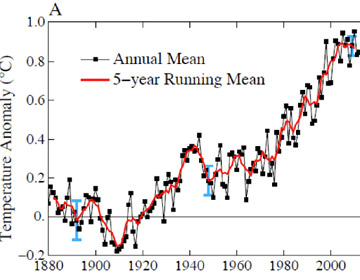 World must aim for one degrees Celsius warming, instead of two say leading scientists. Two degrees is too much: that’s the conclusion of a landmark new paper by top economists and climatologists, including James Hansen formerly of NASA. The paper, appearing in the open-access journal PLoS ONE, argues that global society must aim for only […]
World must aim for one degrees Celsius warming, instead of two say leading scientists. Two degrees is too much: that’s the conclusion of a landmark new paper by top economists and climatologists, including James Hansen formerly of NASA. The paper, appearing in the open-access journal PLoS ONE, argues that global society must aim for only […]
Building a new generation of local conservationists: how improving education in Uganda may save one of the world’s great forests
 The 2013 Zoos and Aquariums: Committing to Conservation (ZACC) conference runs from July 8th—July 12th in Des Moines, Iowa, hosted by the Blank Park Zoo. Ahead of the event, Mongabay.com is running a series of Q&As with presenters. For more interviews, please see our ZACC feed. Students learn about sustainable farming. Photo courtesy of Elizabeth […]
The 2013 Zoos and Aquariums: Committing to Conservation (ZACC) conference runs from July 8th—July 12th in Des Moines, Iowa, hosted by the Blank Park Zoo. Ahead of the event, Mongabay.com is running a series of Q&As with presenters. For more interviews, please see our ZACC feed. Students learn about sustainable farming. Photo courtesy of Elizabeth […]
Saving one of Africa’s most stunning parks through biomass briquettes and fuel-efficient stoves
 The 2013 Zoos and Aquariums: Committing to Conservation (ZACC) conference runs from July 8th—July 12th in Des Moines, Iowa, hosted by the Blank Park Zoo. Ahead of the event, Mongabay.com is running a series of Q&As with presenters. For more interviews, please see our ZACC feed. Locals investigating a biomass briquette. Photo courtesy of New […]
The 2013 Zoos and Aquariums: Committing to Conservation (ZACC) conference runs from July 8th—July 12th in Des Moines, Iowa, hosted by the Blank Park Zoo. Ahead of the event, Mongabay.com is running a series of Q&As with presenters. For more interviews, please see our ZACC feed. Locals investigating a biomass briquette. Photo courtesy of New […]
Proposed coal plant threatens Critically Endangered Philippine cockatoo
 One kilometer off the Philippine island of Palawan lies the Rasa Island Wildlife Sanctuary; here forest grows unimpeded from a coral island surrounded by mangroves and coral reefs. Although tiny, over a hundred bird species have been recorded on the island along with a major population of large flying foxes, while in the waters below […]
One kilometer off the Philippine island of Palawan lies the Rasa Island Wildlife Sanctuary; here forest grows unimpeded from a coral island surrounded by mangroves and coral reefs. Although tiny, over a hundred bird species have been recorded on the island along with a major population of large flying foxes, while in the waters below […]
Energy efficiency gains failing to keep pace with Internet’s growth
 Energy efficiency gains are failing to keep pace with the Internet’s rapid rate of expansion, meaning that global web use is consuming an increasing share energy, warns a new perspective published in the journal Science. Noting that the world’s data centers already consume 270 terawatt hours and Internet traffic volume is doubling every three years, […]
Energy efficiency gains are failing to keep pace with the Internet’s rapid rate of expansion, meaning that global web use is consuming an increasing share energy, warns a new perspective published in the journal Science. Noting that the world’s data centers already consume 270 terawatt hours and Internet traffic volume is doubling every three years, […]
Energizing Sustainable Cities: Assessing Urban Energy – book review
 Energizing Sustainable Cities: Assessing Urban Energy, edited by Arnulf Grubler and David Fisk, is a very well written book describing challenges and opportunities to define, analyze, and implement sustainable energy development for 21st Century urban centers. Urban populations, while roughly 50% of the global population, consume over 75% of the globe’s energy. Therefore, developing frameworks […]
Energizing Sustainable Cities: Assessing Urban Energy, edited by Arnulf Grubler and David Fisk, is a very well written book describing challenges and opportunities to define, analyze, and implement sustainable energy development for 21st Century urban centers. Urban populations, while roughly 50% of the global population, consume over 75% of the globe’s energy. Therefore, developing frameworks […]
Paradigm shift needed to avert global environmental collapse, according to author of new book The Blueprint: Averting Global Collapse
 Scientists and experts are increasingly concerned that we are entering an age of ecological collapse with untold impacts for future generations. In Daniel Rirdan’s new book, The Blueprint, he outlines how to avoid this fate. Author, global strategist, and speaker Daniel Rirdan set out to create a plan addressing the future of our planet. His […]
Scientists and experts are increasingly concerned that we are entering an age of ecological collapse with untold impacts for future generations. In Daniel Rirdan’s new book, The Blueprint, he outlines how to avoid this fate. Author, global strategist, and speaker Daniel Rirdan set out to create a plan addressing the future of our planet. His […]
As Doha Climate Summit kicks off, more ambitious cuts to greenhouse gas emissions needed
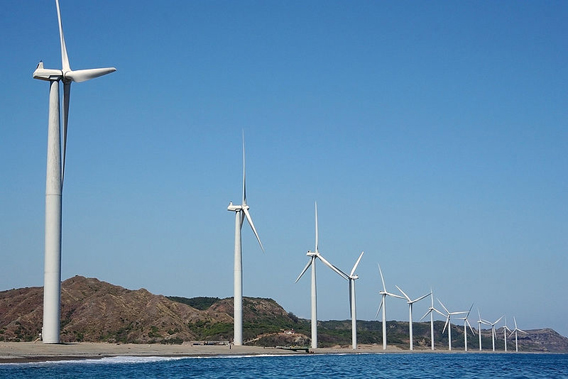 Bangui Windfarm in the Philippines. Photo by: John Ryan Cordova. As the 18th meeting of the UN Framework Convention on Climate Change (UNFCCC) kicks off this morning in oil and gas rich Qatar, the world body warns that much more ambitious greenhouse gas cuts are needed to keep catastrophic climate change at bay. A new […]
Bangui Windfarm in the Philippines. Photo by: John Ryan Cordova. As the 18th meeting of the UN Framework Convention on Climate Change (UNFCCC) kicks off this morning in oil and gas rich Qatar, the world body warns that much more ambitious greenhouse gas cuts are needed to keep catastrophic climate change at bay. A new […]
U.S. to become world’s largest oil producer in 5 years
In a dramatic reversal, the United States is set to become the world’s largest producer of oil by 2017, according to a new report from the International Energy Agency (IEA). The report predicts that the U.S. will be self-sufficient in energy by 2035, while North America as a whole will be a net oil exporter […]
Will we need to pull carbon out of the atmosphere to save ourselves?
 The ongoing decline in Arctic sea ice hit a new record this year that rocked even the most pessimistic predictions. The low sea ice extent hit 18 percent below the previous record set in just 2007, and was only around half the size it was in 1980. Here, NASA satellites catches a glimpse of the […]
The ongoing decline in Arctic sea ice hit a new record this year that rocked even the most pessimistic predictions. The low sea ice extent hit 18 percent below the previous record set in just 2007, and was only around half the size it was in 1980. Here, NASA satellites catches a glimpse of the […]
U.S. boosts fuel economy standard to 54.5 mpg
 US oil consumption and fuel economy. Data from the EIA. The Obama administration finalized rules that will boost the national fuel economy standard for cars and light trucks to 54.5 miles per gallon for the 2025 model year. President Obama said the new rules would reduce oil imports by half. “These fuel standards represent the […]
US oil consumption and fuel economy. Data from the EIA. The Obama administration finalized rules that will boost the national fuel economy standard for cars and light trucks to 54.5 miles per gallon for the 2025 model year. President Obama said the new rules would reduce oil imports by half. “These fuel standards represent the […]
United States ranks near bottom on first ever energy efficiency scorecard
 Popular for a time, General Motor’s Hummer brand was criticized for its lack of efficiency. The brand has now been dropped. Last month, the American Council for an Energy Efficient Economy released its first ever international energy efficiency scorecard, which gave the United Kingdom the top score. Using data points honed over years of rating […]
Popular for a time, General Motor’s Hummer brand was criticized for its lack of efficiency. The brand has now been dropped. Last month, the American Council for an Energy Efficient Economy released its first ever international energy efficiency scorecard, which gave the United Kingdom the top score. Using data points honed over years of rating […]
Republican stalwart calls global warming ‘a matter of fact’, pushes for carbon tax
 NASA GISS Surface Temperature Analysis for June 2012 compared with a 1951-1980 baseline. Former Secretary of State George Shultz is calling for a carbon tax to reduce U.S. greenhouse gas emissions and oil consumption, according to an interview released today by Stanford University. Shultz, who served as secretary of state under President Ronald Reagan as […]
NASA GISS Surface Temperature Analysis for June 2012 compared with a 1951-1980 baseline. Former Secretary of State George Shultz is calling for a carbon tax to reduce U.S. greenhouse gas emissions and oil consumption, according to an interview released today by Stanford University. Shultz, who served as secretary of state under President Ronald Reagan as […]
Scientists: if we don’t act now we’re screwed
 Aerial view of the infamous Río Huaypetue gold mine in the Peruvian Amazon. This remote but massive gold mine is known for the destruction of primary rainforest, widespread mercury pollution, and child and slave labor. Photo by: Rhett A. Butler. Scientists warn that the Earth may be reaching a planetary tipping point due to a […]
Aerial view of the infamous Río Huaypetue gold mine in the Peruvian Amazon. This remote but massive gold mine is known for the destruction of primary rainforest, widespread mercury pollution, and child and slave labor. Photo by: Rhett A. Butler. Scientists warn that the Earth may be reaching a planetary tipping point due to a […]
For Earth Day, 17 celebrated scientists on how to make a better world
 Observations of planet Earth from the Moderate Resolution Imaging Spectroradiometer (MODIS) on July 11, 2005. Photo by: NASA. Seventeen top scientists and four acclaimed conservation organizations have called for radical action to create a better world for this and future generations. Compiled by 21 past winners of the prestigious Blue Planet Prize, a new paper […]
Observations of planet Earth from the Moderate Resolution Imaging Spectroradiometer (MODIS) on July 11, 2005. Photo by: NASA. Seventeen top scientists and four acclaimed conservation organizations have called for radical action to create a better world for this and future generations. Compiled by 21 past winners of the prestigious Blue Planet Prize, a new paper […]
California sets tough new clean car standards
The U.S. state that takes climate change most seriously—California—has unanimously approved new rules dubbed the Advanced Clean Cars program to lower carbon emissions, reduce oil dependence, mitigate health impacts from pollution, and save consumers money in the long-term. According to the new standards, by 2025 cars sold in California must cut greenhouse gas emissions by […]
Facebook pledges to go green…someday soon
After a massive campaign by Greenpeace to get everyone’s favorite social media site to quit coal energy, Facebook has announced a new energy policy and a partnership with Greenpeace. The policy includes a goal “to power all of our operations with clean and renewable energy,” however does not go so far as to state it […]
Nobel laureates: ‘we are transgressing planetary boundaries that have kept civilization safe for the past 10,000 years’
 Last week the 3rd Nobel Laureates Symposium on Global Sustainability concluded with participants—including 17 past Nobel Prize winners and 40 other experts—crafting and signing the Stockholm Memorandum. The document calls for emergency actions to tackle human pressures on the Earth’s environment while ensuring a more equitable and just world. “Science makes clear that we are […]
Last week the 3rd Nobel Laureates Symposium on Global Sustainability concluded with participants—including 17 past Nobel Prize winners and 40 other experts—crafting and signing the Stockholm Memorandum. The document calls for emergency actions to tackle human pressures on the Earth’s environment while ensuring a more equitable and just world. “Science makes clear that we are […]
2% GDP could turn global economy green
 Investing around $1.3 trillion, which represents about 2% of the world’s gross domestic product (GDP), into ten sectors could move the world economy from fossil-fuel dependent toward a low carbon economy, according to report by the UN Environment Program (UNEP). In addition, the investments would alleviate global poverty and keep stagnating economies humming, while cutting […]
Investing around $1.3 trillion, which represents about 2% of the world’s gross domestic product (GDP), into ten sectors could move the world economy from fossil-fuel dependent toward a low carbon economy, according to report by the UN Environment Program (UNEP). In addition, the investments would alleviate global poverty and keep stagnating economies humming, while cutting […]
Flight of the Monarchs Reveals Environmental Connections across a Continent
 As autumn settles across North America, one hallmark of the season is the gentle southward flight of the Monarch Butterflies as they migrate towards the forests that shelter their species during the winter months. Unfortunately, as with other forests across the planet, the Monarch’s “over- wintering grounds” in Mexico are suffering from increased human pressures. […]
As autumn settles across North America, one hallmark of the season is the gentle southward flight of the Monarch Butterflies as they migrate towards the forests that shelter their species during the winter months. Unfortunately, as with other forests across the planet, the Monarch’s “over- wintering grounds” in Mexico are suffering from increased human pressures. […]
Citizens of 188 countries challenge leaders on climate change
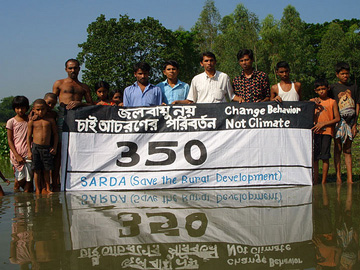 As world leaders continue to fumble a coherent, rapid, and comprehensive response to climate change, citizens from around the world yesterday sent a message to inert politicians by participating in over 7,300 events against climate change, according to 350.org, the head organizer of the day dubbed the ‘Global Work Party’. “The fossil fuel industry may […]
As world leaders continue to fumble a coherent, rapid, and comprehensive response to climate change, citizens from around the world yesterday sent a message to inert politicians by participating in over 7,300 events against climate change, according to 350.org, the head organizer of the day dubbed the ‘Global Work Party’. “The fossil fuel industry may […]
Environmental destruction undercuts global economy to the tune of $6.6 trillion
 The cost of environmental damage to the global economy hit 6.6 trillion US dollars—11 percent of the global GDP—in 2008, according to a new study by the Principles for Responsible (PRI) and UNEP Finance Initiative. If business continues as usual, the study predicts that environmental damage will cost 28 trillion dollars by 2050. The new […]
The cost of environmental damage to the global economy hit 6.6 trillion US dollars—11 percent of the global GDP—in 2008, according to a new study by the Principles for Responsible (PRI) and UNEP Finance Initiative. If business continues as usual, the study predicts that environmental damage will cost 28 trillion dollars by 2050. The new […]
El Niño in Venezuela: Hugo Chávez’s “Katrina” Moment?
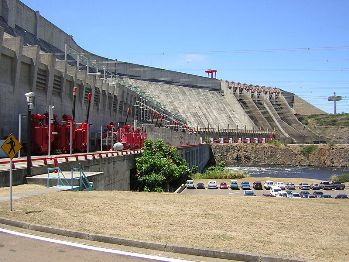 Venezuelan President Hugo Chávez has been in power for more than ten years, during which time he has deflected numerous electoral challenges, a recall effort, a coup d’etat and even an oil lock out. A politically adroit statesman, he has demonstrated enormous staying power throughout all these political crises. Yet, Chávez’s luck may have finally […]
Venezuelan President Hugo Chávez has been in power for more than ten years, during which time he has deflected numerous electoral challenges, a recall effort, a coup d’etat and even an oil lock out. A politically adroit statesman, he has demonstrated enormous staying power throughout all these political crises. Yet, Chávez’s luck may have finally […]
Analysis shows Borneo can say ‘no’ to coal power
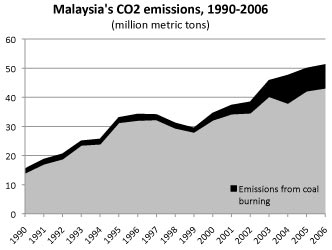 Plans for a coal power plant in the Malaysian state of Sabah in northern Borneo have run into stiff opposition. Environmentalists say the coal plant could damage extensive coral reef systems, pollute water supplies, open rainforests to mining, and contribute to global climate change, undercutting Sabah’s image as a ‘green’ destination. The federal government contends […]
Plans for a coal power plant in the Malaysian state of Sabah in northern Borneo have run into stiff opposition. Environmentalists say the coal plant could damage extensive coral reef systems, pollute water supplies, open rainforests to mining, and contribute to global climate change, undercutting Sabah’s image as a ‘green’ destination. The federal government contends […]
US Congressman pushes for bird-friendly buildings
 Birds may see pleasanter skies in the US soon, if Congressman Mike Quigley has his way. Quigley, a democrat from Illinois, has introduced legislation that would require all federal buildings to become bird-friendly, potentially saving the lives of millions of birds every year. “Building collisions are arguably the single greatest man-made killer of birds. From […]
Birds may see pleasanter skies in the US soon, if Congressman Mike Quigley has his way. Quigley, a democrat from Illinois, has introduced legislation that would require all federal buildings to become bird-friendly, potentially saving the lives of millions of birds every year. “Building collisions are arguably the single greatest man-made killer of birds. From […]
Consumers fail at identifying green companies
 An article today in New Scientist shows that American consumers have a difficult time correctly identifying green companies, often confusing ‘greenwashing’ for true green credentials or not bestowing enough credit where credit is truly due. By combining data from Earthsense, which polled 30,000 Americans about on their views of ‘green’ companies, and Trucost which assesses […]
An article today in New Scientist shows that American consumers have a difficult time correctly identifying green companies, often confusing ‘greenwashing’ for true green credentials or not bestowing enough credit where credit is truly due. By combining data from Earthsense, which polled 30,000 Americans about on their views of ‘green’ companies, and Trucost which assesses […]
White roofs could cool cities
Painting urban roofs white could effectively counteract some of the urban heat-island effect and even lower greenhouse gas emissions in cities, reports a new study in Geophysical Research Letters. “Our research demonstrates that white roofs, at least in theory, can be an effective method for reducing urban heat,” says Keith Oleson, the lead author of […]
United States to speed up green technology patents
 Green technology patents will see a year shaved off the average forty month wait time to approve new patents in the US. The US Patent and Trademark Office (USPTO) is implementing a one-year pilot program to push green technology patent applications through the process more quickly, so that the technologies can reach the market faster. […]
Green technology patents will see a year shaved off the average forty month wait time to approve new patents in the US. The US Patent and Trademark Office (USPTO) is implementing a one-year pilot program to push green technology patent applications through the process more quickly, so that the technologies can reach the market faster. […]
New rating systems seeks to promote sustainable landscapes from shopping malls to city parks
 The Sustainable Sites Initiative has developed the United States’ first rating system for the design, construction, and on-going maintenance of a wide-variety of landscapes, both with and without buildings, including shopping malls, subdivisions, university campuses, corporate buildings, transportation centers, parks and other recreation areas, and single-family homes. “While carbon-neutral performance remains the holy grail for […]
The Sustainable Sites Initiative has developed the United States’ first rating system for the design, construction, and on-going maintenance of a wide-variety of landscapes, both with and without buildings, including shopping malls, subdivisions, university campuses, corporate buildings, transportation centers, parks and other recreation areas, and single-family homes. “While carbon-neutral performance remains the holy grail for […]
Bioelectricity bests ethanol on two fronts: land use and global warming
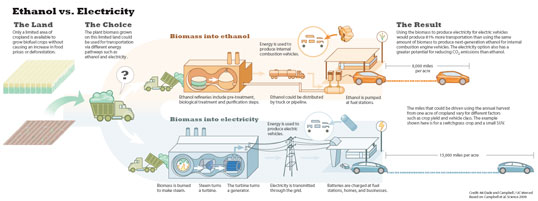 Yesterday the Obama Administration established a Biofuels Interagency Working Group to oversee implementation of new rules and research regarding biofuels. On the group’s first day they would do well to look at a new study in Science Magazine comparing the efficacy of ethanol versus bioelectricity. Researchers compared ethanol and bioelectricity in terms of miles per […]
Yesterday the Obama Administration established a Biofuels Interagency Working Group to oversee implementation of new rules and research regarding biofuels. On the group’s first day they would do well to look at a new study in Science Magazine comparing the efficacy of ethanol versus bioelectricity. Researchers compared ethanol and bioelectricity in terms of miles per […]
Clean energy investment moving too slowly to avoid irreversible climate change
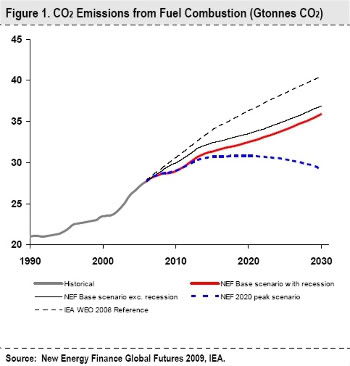
Obama pushes for better mileage standards

Tool helps overcome miles-per-gallon illusion
US government: $28 carbon price would raise gas prices by 25 cents
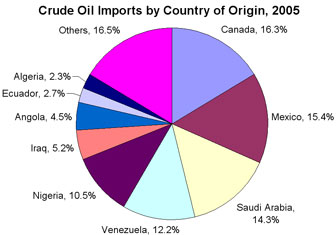 US government: $28 carbon price would raise gas prices by 25 cents US government: $28 carbon price would raise gas prices by 25 cents mongabay.com October 9, 2008 Congressional Budget Office study finds $200/ton carbon tax would only raise gas prices $2 per gallon
US government: $28 carbon price would raise gas prices by 25 cents US government: $28 carbon price would raise gas prices by 25 cents mongabay.com October 9, 2008 Congressional Budget Office study finds $200/ton carbon tax would only raise gas prices $2 per gallon
Big computer makers pitch energy efficiency to sell more services, equipment
Big computer makers pitch energy efficiency to sell more services, equipment Big computer makers pitch energy efficiency to sell more services, equipment mongabay.com September 9, 2008 Tech giants are using high power costs to market new energy efficiency computers to large corporate data centers, reports the Wall Street Journal. “Ironically, the companies that designed and […]
U.N. raises thermostats to cut emissions, save money
U.N. raises thermostats to cut emissions, save money U.N. raises thermostats to cut emissions, save money mongabay.com July 31, 2008 In a bid lead by example on climate change, United Nations Secretary-General Ban Ki-moon unveiled “Cool UN,” an initiative which seeks to limit the use of air conditioning, slash greenhouse gas emissions and save money. […]
Gore launches second campaign… for Earth
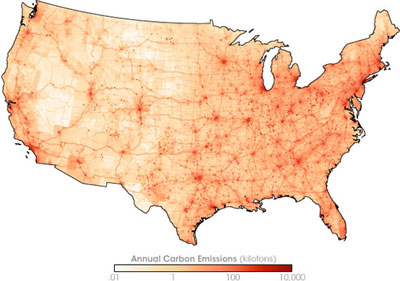 Gore launches second campaign… for Earth Gore launches second campaign mongabay.com July 17, 2008 In a speech Thursday, Al Gore challenged the U.S. to generate 100 percent of its electricity from zero carbon emission sources within 10 years. Speaking at Washington’s Constitution Hall, Gore said America’s security, environmental and economic crises are all related, and […]
Gore launches second campaign… for Earth Gore launches second campaign mongabay.com July 17, 2008 In a speech Thursday, Al Gore challenged the U.S. to generate 100 percent of its electricity from zero carbon emission sources within 10 years. Speaking at Washington’s Constitution Hall, Gore said America’s security, environmental and economic crises are all related, and […]
Clean energy gold rush in 2007
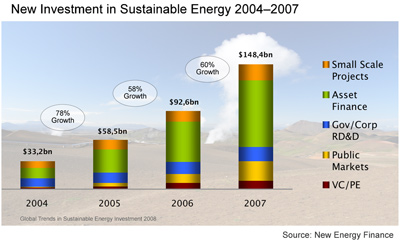 Clean energy investments rose 60% to $148 billion in 2007 Clean energy gold rush in 2007 mongabay.com July 1, 2008 New investment in renewables and energy efficiency surpassed $148 billion in 2007, rising 60 percent rise from 2006, according to an analysis issued Tuesday July 1 by the UN Environment Programme (UNEP). High oil prices […]
Clean energy investments rose 60% to $148 billion in 2007 Clean energy gold rush in 2007 mongabay.com July 1, 2008 New investment in renewables and energy efficiency surpassed $148 billion in 2007, rising 60 percent rise from 2006, according to an analysis issued Tuesday July 1 by the UN Environment Programme (UNEP). High oil prices […]
California plan would cut emissions 30% by 2020
California plan would cut emissions 30% by 2020 California plan would cut emissions 30% by 2020 mongabay.com June 27, 2008 California announced a plan to reduce state greenhouse gas emissions by 30 percent by 2020. The measures include a cap and trade program covering 85 percent of the state’s emissions, incentives for utilities to generate […]
$45 trillion needed to meet energy demand, fight global warming by 2050
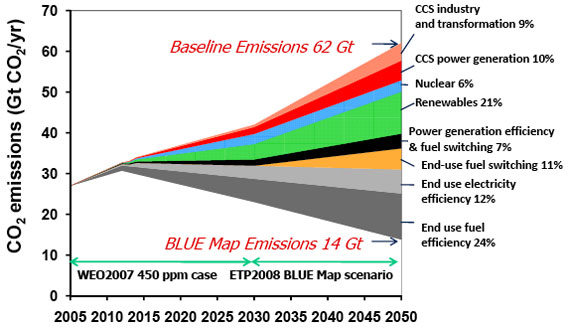 $45 trillion needed to meet energy demand, fight global warming by 2050 $45 trillion needed to meet energy demand, fight global warming by 2050 mongabay.com June 8, 2008 Investors will need to spend $45 trillion by 2050 to keep pace with growing energy demand while addressing concerns over global warming, warned the International Energy Agency […]
$45 trillion needed to meet energy demand, fight global warming by 2050 $45 trillion needed to meet energy demand, fight global warming by 2050 mongabay.com June 8, 2008 Investors will need to spend $45 trillion by 2050 to keep pace with growing energy demand while addressing concerns over global warming, warned the International Energy Agency […]
Future cities will be more like ecosystems that enrich society and the environment
 Future cities will be more like ecosystems that enrich society and the environment Future cities will be more like ecosystems that enrich society and the environment Tina Butler, mongabay.com May 30, 2008 As The World Science Festival continues in New York this week, specialists in vastly diverse fields across scientific disciplines are coming together to […]
Future cities will be more like ecosystems that enrich society and the environment Future cities will be more like ecosystems that enrich society and the environment Tina Butler, mongabay.com May 30, 2008 As The World Science Festival continues in New York this week, specialists in vastly diverse fields across scientific disciplines are coming together to […]
New review system helps companies adapt to ecosystem degradation
 New review system helps companies adapt to ecosystem degradation New review system helps companies adapt to ecosystem degradation Jeremy Hance, mongabay.com March 11, 2008 A new accountability initiative will help companies factor ecosystem degradation into their business decisions. Developed by the World Resources Institute (WRI), the Meridian Institute, and the World Business Council for Sustainable […]
New review system helps companies adapt to ecosystem degradation New review system helps companies adapt to ecosystem degradation Jeremy Hance, mongabay.com March 11, 2008 A new accountability initiative will help companies factor ecosystem degradation into their business decisions. Developed by the World Resources Institute (WRI), the Meridian Institute, and the World Business Council for Sustainable […]
Carbon tax would make China greener and reduce warming risks
 Carbon tax would make China greener and reduce warming risks Carbon tax would make China greener and reduce warming risks Rhett Butler, mongabay.com February 7, 2008 Driven by booming economic growth and rapid urbanization, China’s carbon dioxide emissions are surging. At the same time, forecasts suggest climate change will have an immense impact on the […]
Carbon tax would make China greener and reduce warming risks Carbon tax would make China greener and reduce warming risks Rhett Butler, mongabay.com February 7, 2008 Driven by booming economic growth and rapid urbanization, China’s carbon dioxide emissions are surging. At the same time, forecasts suggest climate change will have an immense impact on the […]
New program pays Canadians for energy efficiency gains
 New program pays Canadians for energy efficiency gains New program pays Canadians for energy efficiency gains By Dan of dailyhomerenotips.com, special to mongabay.com January 20, 2008 Canada’s ecoENERGY Grant Program Focuses on Energy Conservation; Indirect Benefit is Education As I write this article, CBS News is having a Sunday evening prime-time, hour long special on […]
New program pays Canadians for energy efficiency gains New program pays Canadians for energy efficiency gains By Dan of dailyhomerenotips.com, special to mongabay.com January 20, 2008 Canada’s ecoENERGY Grant Program Focuses on Energy Conservation; Indirect Benefit is Education As I write this article, CBS News is having a Sunday evening prime-time, hour long special on […]
Google aims to make renewable energy sources cheaper than coal
 Google aims to make renewable energy sources cheaper than coal Google aims to make renewable energy cheaper than coal mongabay.com November 28, 2007 Tuesday Google announced an initiative to develop electricity from renewable energy sources that will be cheaper than electricity produced from coal. The initiative, dubbed RE<C, will initially focus on solar, wind, and […]
Google aims to make renewable energy sources cheaper than coal Google aims to make renewable energy cheaper than coal mongabay.com November 28, 2007 Tuesday Google announced an initiative to develop electricity from renewable energy sources that will be cheaper than electricity produced from coal. The initiative, dubbed RE<C, will initially focus on solar, wind, and […]
Governors announce energy efficiency push for computing
 Governors announce energy efficiency push for computing Governors announce energy efficiency push for computing mongabay.com November 7, 2007 The National Governors Association (NGA) today announced a clean energy partnership between the NGA Chair’s Initiative Securing a Clean Energy Future (SCEF) and the Climate Savers Computing Initiative (CSCI), founded by Google and Intel, to foster deployment […]
Governors announce energy efficiency push for computing Governors announce energy efficiency push for computing mongabay.com November 7, 2007 The National Governors Association (NGA) today announced a clean energy partnership between the NGA Chair’s Initiative Securing a Clean Energy Future (SCEF) and the Climate Savers Computing Initiative (CSCI), founded by Google and Intel, to foster deployment […]
Big companies push energy efficiency
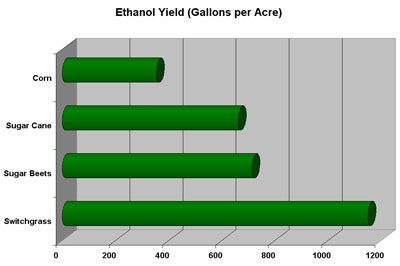 New Nebraska ethanol plants threaten Kansas water supplies New Nebraska ethanol plants threaten Kansas water supplies mongabay.com September 5, 2007 Ethanol production is threatening water supplies in the American Midwest reports the Wall Street Journal. The paper presents the water conflict between corn growers in Nebraska and Kansas owners of underground water wells on the […]
New Nebraska ethanol plants threaten Kansas water supplies New Nebraska ethanol plants threaten Kansas water supplies mongabay.com September 5, 2007 Ethanol production is threatening water supplies in the American Midwest reports the Wall Street Journal. The paper presents the water conflict between corn growers in Nebraska and Kansas owners of underground water wells on the […]
Wall Street looks at energy efficiency to boost profits
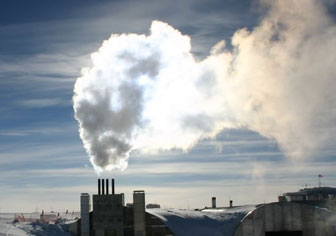 Wall Street looks at energy efficiency to boost profits Wall Street looks at energy efficiency to boost profits mongabay.com August 27, 2007 Today the Wall Street Journal featured a special section on energy efficiency. The paper reports that business is increasingly looking at reducing energy use as a way to improve the bottom line. “Now, […]
Wall Street looks at energy efficiency to boost profits Wall Street looks at energy efficiency to boost profits mongabay.com August 27, 2007 Today the Wall Street Journal featured a special section on energy efficiency. The paper reports that business is increasingly looking at reducing energy use as a way to improve the bottom line. “Now, […]
Florida to cut greenhouse gas emissions 80% by 2050
 Florida to cut greenhouse gas emissions 80% by 2050 Florida to cut greenhouse gas emissions 80% by 2050 mongabay.com July 15, 2007 Florida plans to cut greenhouse gas emissions 80 percent from 1990 levels by 2050 according to Charlie Crist, Florida’s Republican state governor. Due to its low elevation and hurricane risk, global warming may […]
Florida to cut greenhouse gas emissions 80% by 2050 Florida to cut greenhouse gas emissions 80% by 2050 mongabay.com July 15, 2007 Florida plans to cut greenhouse gas emissions 80 percent from 1990 levels by 2050 according to Charlie Crist, Florida’s Republican state governor. Due to its low elevation and hurricane risk, global warming may […]
Amazon.com, eBay rank worst for global warming efforts
 Survey: Amazon.com, eBay rank worst of internet firms for global warming mitigation efforts Amazon.com, eBay rank below Microsoft, Yahoo for global warming efforts mongabay.com June 20, 2007 Amazon.com and eBay rank at the bottom of the list of internet companies when it comes to reducing their impact on climate, reports a new analysis from Climate […]
Survey: Amazon.com, eBay rank worst of internet firms for global warming mitigation efforts Amazon.com, eBay rank below Microsoft, Yahoo for global warming efforts mongabay.com June 20, 2007 Amazon.com and eBay rank at the bottom of the list of internet companies when it comes to reducing their impact on climate, reports a new analysis from Climate […]
Google to be carbon neutral by year end
 Google to be carbon neutral by year end Google to be carbon neutral by year end mongabay.com June 20, 2007 Google Inc. aims to be carbon neutral by the end of 2007, according to a statement posted on the Official Google Blog. The search giant plans to fight global warming by investing in and using […]
Google to be carbon neutral by year end Google to be carbon neutral by year end mongabay.com June 20, 2007 Google Inc. aims to be carbon neutral by the end of 2007, according to a statement posted on the Official Google Blog. The search giant plans to fight global warming by investing in and using […]
$100 billion invested in renewable energy in 2006
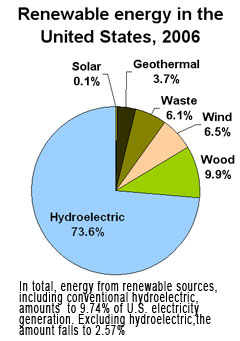 $100 billion invested in renewable energy in 2006 $100 billion invested in renewable energy in 2006 mongabay.com June 20, 2007 $100 billion poured into renewable energy and energy efficiency in 2006, a 25 percent jump from 2005, reports a new analysis by the UN Environment Programme (UNEP). UNEP anticipates the trend will slow to $85 […]
$100 billion invested in renewable energy in 2006 $100 billion invested in renewable energy in 2006 mongabay.com June 20, 2007 $100 billion poured into renewable energy and energy efficiency in 2006, a 25 percent jump from 2005, reports a new analysis by the UN Environment Programme (UNEP). UNEP anticipates the trend will slow to $85 […]
Google will put $10M towards plug-in hybrid cars
 Google will put $10M towards plug-in hybrid cars Google will put $10M towards plug-in hybrid cars Rhett A. Butler, mongabay.com June 19, 2007 Google.org, Google Inc.’s philanthropic arm, unveiled an initiative to convert hybrid cars to plug-in hybrid vehicles (PHEVs), a move that will cut carbon dioxide emissions, reduce oil use, and help stabilize the […]
Google will put $10M towards plug-in hybrid cars Google will put $10M towards plug-in hybrid cars Rhett A. Butler, mongabay.com June 19, 2007 Google.org, Google Inc.’s philanthropic arm, unveiled an initiative to convert hybrid cars to plug-in hybrid vehicles (PHEVs), a move that will cut carbon dioxide emissions, reduce oil use, and help stabilize the […]
Google, Intel seek greener computers
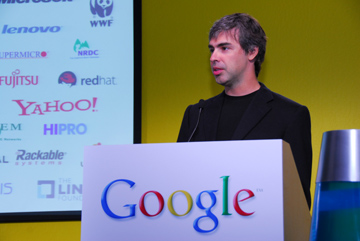 Google, Intel seek greener computers Google, Intel seek greener computers Rhett A. Butler, mongabay.com June 13, 2007 Google, Intel, and other tech giants announced an energy efficiency drive develop “greener” computers that use 50 percent less power by 2010. The plan, dubbed the Climate Savers Computing Initiative, seeks to reduce emissions of greenhouse gases that […]
Google, Intel seek greener computers Google, Intel seek greener computers Rhett A. Butler, mongabay.com June 13, 2007 Google, Intel, and other tech giants announced an energy efficiency drive develop “greener” computers that use 50 percent less power by 2010. The plan, dubbed the Climate Savers Computing Initiative, seeks to reduce emissions of greenhouse gases that […]
Google, Microsoft launch energy efficiency initiative
 Google, Microsoft launch energy efficiency initiative Google, Microsoft launch energy efficiency initiative Rhett A. Butler, mongabay.com June 12, 2007 Google, Microsoft, and other tech giants announced an energy efficiency drive to reduce computer power consumption by 50 percent by 2010. The scheme, dubbed the Climate Savers Computing Initiative, seeks to reduce the emission of greenhouse […]
Google, Microsoft launch energy efficiency initiative Google, Microsoft launch energy efficiency initiative Rhett A. Butler, mongabay.com June 12, 2007 Google, Microsoft, and other tech giants announced an energy efficiency drive to reduce computer power consumption by 50 percent by 2010. The scheme, dubbed the Climate Savers Computing Initiative, seeks to reduce the emission of greenhouse […]
Nobel prize winner debates future of nuclear power
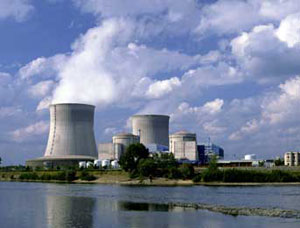 Nobel prize winner debates future of nuclear power Nobel prize winner debates future of nuclear power Rhett A. Butler, mongabay.com June 7, 2007 Two renowned energy experts sparred in a debate over nuclear energy Wednesday afternoon at Stanford University. Amory Lovins, Chairman and Chief Scientist of the Rocky Mountain Institute, an energy think tank, argued […]
Nobel prize winner debates future of nuclear power Nobel prize winner debates future of nuclear power Rhett A. Butler, mongabay.com June 7, 2007 Two renowned energy experts sparred in a debate over nuclear energy Wednesday afternoon at Stanford University. Amory Lovins, Chairman and Chief Scientist of the Rocky Mountain Institute, an energy think tank, argued […]
Intel pushes its environmental initiatives
 Intel pushes its environmental initiatives Intel pushes its environmental initiatives mongabay.com May 23, 2007 Intel Corp. said it is removing lead from its next generation of computer chips. Instead the company will use an alloy made up of tin, silver, and copper. Intel said the decision stems from concerns over the public health and environmental […]
Intel pushes its environmental initiatives Intel pushes its environmental initiatives mongabay.com May 23, 2007 Intel Corp. said it is removing lead from its next generation of computer chips. Instead the company will use an alloy made up of tin, silver, and copper. Intel said the decision stems from concerns over the public health and environmental […]
IBM launches “green” chip
 IBM launches “green” chip IBM launches “green” chip mongabay.com May 22, 2007 IBM is touting the “green” credentials of its newest and most powerful microprocessor, the “Power6.” The tech firm says that the chip has a record speed of 4.7, offering double the speed of previous generation ‘Power5’ processors, but uses roughly the same power […]
IBM launches “green” chip IBM launches “green” chip mongabay.com May 22, 2007 IBM is touting the “green” credentials of its newest and most powerful microprocessor, the “Power6.” The tech firm says that the chip has a record speed of 4.7, offering double the speed of previous generation ‘Power5’ processors, but uses roughly the same power […]
CO2 emissions growth surges as global energy efficiency falls
 CO2 emissions growth surges as global energy efficiency falls CO2 emissions growth surges as global energy efficiency falls No region decarbonizes its energy supply mongabay.com May 20, 2007 Worldwide growth in carbon dioxide emissions has doubled since the close of the 1990s, reports a study published in the early on-line edition of the Proceedings of […]
CO2 emissions growth surges as global energy efficiency falls CO2 emissions growth surges as global energy efficiency falls No region decarbonizes its energy supply mongabay.com May 20, 2007 Worldwide growth in carbon dioxide emissions has doubled since the close of the 1990s, reports a study published in the early on-line edition of the Proceedings of […]
Improving energy efficiency will require overcoming market distortions
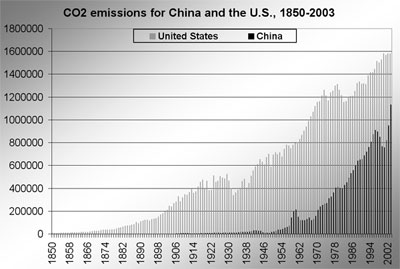 Improving energy efficiency will require overcoming market distortions Improving energy efficiency will require overcoming market distortions mongabay.com May 20, 2007 In a new study, McKinsey&Company, one the world’s most respected management consulting firms, reports that the world should be able to cut energy demand growth by half over the next 15 years without compromising economic […]
Improving energy efficiency will require overcoming market distortions Improving energy efficiency will require overcoming market distortions mongabay.com May 20, 2007 In a new study, McKinsey&Company, one the world’s most respected management consulting firms, reports that the world should be able to cut energy demand growth by half over the next 15 years without compromising economic […]
16 cities to get energy-saving retrofits
 16 cities to get energy-saving retrofits 16 cities to get energy-saving retrofits mongabay.com May 17, 2007 Sixteen cities will get financing to make buildings “greener” through environmental renovations, former President Clinton announced Wednesday at the C40 Large Cities Climate Summit in New York, where mayors and local government officials are meeting to discuss strategies to […]
16 cities to get energy-saving retrofits 16 cities to get energy-saving retrofits mongabay.com May 17, 2007 Sixteen cities will get financing to make buildings “greener” through environmental renovations, former President Clinton announced Wednesday at the C40 Large Cities Climate Summit in New York, where mayors and local government officials are meeting to discuss strategies to […]
Reps Lott and Stevens oppose fuel efficiency bill
 Senate panel sets 35 mpg car standard by 2020 Reps Lott and Stevens oppose fuel efficiency bill Senate panel sets 35 mpg car standard by 2020 mongabay.com May 8, 2007 Tuesday the U.S. Senate Commerce Committee approved a bill that would raise the passenger fleet automobile fuel standard to an average 35 miles per gallon […]
Senate panel sets 35 mpg car standard by 2020 Reps Lott and Stevens oppose fuel efficiency bill Senate panel sets 35 mpg car standard by 2020 mongabay.com May 8, 2007 Tuesday the U.S. Senate Commerce Committee approved a bill that would raise the passenger fleet automobile fuel standard to an average 35 miles per gallon […]
Cost of stabilizing climate 0.1% per year
 Cost of stabilizing climate much less than claimed Cost of stabilizing climate 0.1% per year mongabay.com May 4, 2007 The Intergovernmental Panel on Climate Change (IPCC) released its long awaiting installment on climate change mitigation, arguing that the costs of offsetting global warming will be much lower than some claim. The IPCC estimates that emissions […]
Cost of stabilizing climate much less than claimed Cost of stabilizing climate 0.1% per year mongabay.com May 4, 2007 The Intergovernmental Panel on Climate Change (IPCC) released its long awaiting installment on climate change mitigation, arguing that the costs of offsetting global warming will be much lower than some claim. The IPCC estimates that emissions […]
To fight warming, Canada will ban incandescent light bulbs by 2012
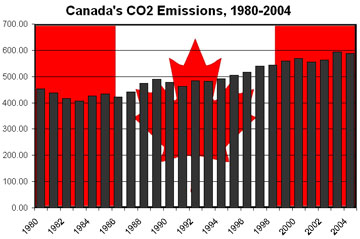 To fight warming, Canada will ban incandescent light bulbs by 2012 To fight warming, Canada will ban incandescent light bulbs by 2012 Rhett A. Butler, mongabay.com April 25, 2007 In an effort to fight greenhouse gas emissions, Canada plans to ban use of incandescent light bulbs by 2012, said Natural Resources Minister Gary Lunn. Canada […]
To fight warming, Canada will ban incandescent light bulbs by 2012 To fight warming, Canada will ban incandescent light bulbs by 2012 Rhett A. Butler, mongabay.com April 25, 2007 In an effort to fight greenhouse gas emissions, Canada plans to ban use of incandescent light bulbs by 2012, said Natural Resources Minister Gary Lunn. Canada […]
Incandescent light bulb ban would cut India’s GHG emissions 4%
 Incandescent light bulb ban would cut India’s GHG emissions 4% Incandescent light bulb ban would cut India’s GHG emissions 4% mongabay.com April 17, 2007 The debate over the impact of global warming on hurricane intensity rages on with a new study published April 18 in Geophysical Research Letters. The research, conducted by Gabriel A. Vecchi […]
Incandescent light bulb ban would cut India’s GHG emissions 4% Incandescent light bulb ban would cut India’s GHG emissions 4% mongabay.com April 17, 2007 The debate over the impact of global warming on hurricane intensity rages on with a new study published April 18 in Geophysical Research Letters. The research, conducted by Gabriel A. Vecchi […]
Palo Alto aims to cut CO2 emissions 80% by 2050
 Palo Alto aims to cut CO2 emissions 80% by 2050 Palo Alto aims to cut CO2 emissions 80% by 2050 Rhett A Butler, mongabay.com April 15, 2007 The city of Palo Alto, California aims to cut greenhouse gas emissions significantly in coming years, joining a growing number of U.S. cities that have pledged to cut […]
Palo Alto aims to cut CO2 emissions 80% by 2050 Palo Alto aims to cut CO2 emissions 80% by 2050 Rhett A Butler, mongabay.com April 15, 2007 The city of Palo Alto, California aims to cut greenhouse gas emissions significantly in coming years, joining a growing number of U.S. cities that have pledged to cut […]
Measures to drive adoption of super efficient cars in the U.S.
Measures to drive adoption of super efficient cars in the U.S. Measures to drive adoption of super efficient cars in the U.S. Rhett A. Butler, mongabay.com April 11, 2007 To reduce its growing dependence on foreign oil the United States could implement relatively low-cost measures to put millions of super efficient vehicles on American highways, […]
U.S. can cut oil imports to zero by 2040, use to zero by 2050
 U.S. can cut oil imports to zero by 2040, use to zero by 2050 U.S. can cut oil imports to zero by 2040, oil use to zero by 2050 mongabay.com March 29, 2007 The United States could dramatically cut oil usage over the next 20-30 years at low to no net cost, said Amory B. […]
U.S. can cut oil imports to zero by 2040, use to zero by 2050 U.S. can cut oil imports to zero by 2040, oil use to zero by 2050 mongabay.com March 29, 2007 The United States could dramatically cut oil usage over the next 20-30 years at low to no net cost, said Amory B. […]
Data centers use at least $7.2 billion in electricity globally
 Data centers use at least $7.2 billion in electricity globally Data centers use at least $7.2 billion in electricity globally mongabay.com February 15, 2007 U.S. data centers consume 45 billion kilowatts of energy per year, according to a new study, commissioned by computer chip maker AMD. Jonathan Koomey, a staff scientist at Lawrence Berkeley National […]
Data centers use at least $7.2 billion in electricity globally Data centers use at least $7.2 billion in electricity globally mongabay.com February 15, 2007 U.S. data centers consume 45 billion kilowatts of energy per year, according to a new study, commissioned by computer chip maker AMD. Jonathan Koomey, a staff scientist at Lawrence Berkeley National […]
Efficiency improvements could cut global energy demand significantly
 Efficiency improvements could cut global energy demand growth significantly Efficiency improvements could cut global energy demand growth significantly mongabay.com November 29, 2006 Growth in global energy consumption could be reduced by more than two-thirds over the next 15 years through energy efficiency efforts according to a study released Wednesday by the McKinsey Global Institute. McKinsey […]
Efficiency improvements could cut global energy demand growth significantly Efficiency improvements could cut global energy demand growth significantly mongabay.com November 29, 2006 Growth in global energy consumption could be reduced by more than two-thirds over the next 15 years through energy efficiency efforts according to a study released Wednesday by the McKinsey Global Institute. McKinsey […]
Hospitals go green
Hospitals go green Hospitals go green mongabay.com October 4, 2006 Some hospitals are going “green” in an effort to cut pollution and toxic emissions that hurt the health of patients and surrounding communities according to an article in today’s issue of The Wall Street Journal. Columnist Laura Landro writes that hospitals are incorporating “green design” […]
Half of Brits want more energy efficient products
Half of Brits want more energy efficient products Half of Brits want more energy efficient products mongabay.com July 4, 2006 Half of British consumers want to see energy inefficient products banned from the market according to a new survey by Energy Saving Trust (EST), a UK-based non-profit organization. In a study of over 1,000 consumers, […]
United States economy becomes more carbon efficient
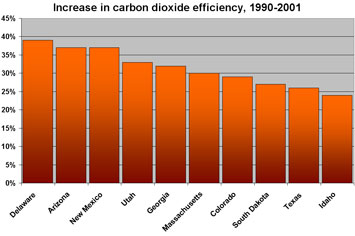 United States economy becomes more carbon efficient — Delaware leads the way, while Nevada has largest increase in emissions United States economy becomes more carbon efficient — Delaware leads the way, while Nevada has largest increase in emissions mongabay.com June 21, 2006 The state of Nevada had the largest increase in carbon emissions between 1990 […]
United States economy becomes more carbon efficient — Delaware leads the way, while Nevada has largest increase in emissions United States economy becomes more carbon efficient — Delaware leads the way, while Nevada has largest increase in emissions mongabay.com June 21, 2006 The state of Nevada had the largest increase in carbon emissions between 1990 […]
US has low-cost alternatives to oil; peak oil frenzy and human-induced climate change avoidable says Columbia University
 US has low-cost alternatives to oil; peak oil frenzy and human-induced climate change avoidable says Columbia University report US has low-cost alternatives to oil; peak oil frenzy and human-induced climate change avoidable says Columbia University report mongabay.com May 14, 2006 Surging oil prices have fueled calls for the United States to develop new sources of […]
US has low-cost alternatives to oil; peak oil frenzy and human-induced climate change avoidable says Columbia University report US has low-cost alternatives to oil; peak oil frenzy and human-induced climate change avoidable says Columbia University report mongabay.com May 14, 2006 Surging oil prices have fueled calls for the United States to develop new sources of […]
Copying nature could save us energy, study shows
 Copying nature could save us energy, study shows Copying nature could save us energy, study shows University of Bath May 9, 2006 New technologies that mimic the way insects, plants and animals overcome engineering problems could help reduce our dependence on energy, according to new research published in the Royal Society journal Interface. When faced […]
Copying nature could save us energy, study shows Copying nature could save us energy, study shows University of Bath May 9, 2006 New technologies that mimic the way insects, plants and animals overcome engineering problems could help reduce our dependence on energy, according to new research published in the Royal Society journal Interface. When faced […]
FSC / RIL certification
 Tropical timber has earned a bad reputation. When we think of timber from lush, tropical forests, it conjures up images of valuable old-growth trees pillaged by logging companies and illegal timber mafias, ignoring the plight of wildlife and local communities. But tropical timber does not have to be bad, some experts say. Tropical wood forms […]
Tropical timber has earned a bad reputation. When we think of timber from lush, tropical forests, it conjures up images of valuable old-growth trees pillaged by logging companies and illegal timber mafias, ignoring the plight of wildlife and local communities. But tropical timber does not have to be bad, some experts say. Tropical wood forms […]
Carbon fiber composites could boost future car fuel efficiency 30 percent
Carbon fiber composites could boost future car fuel efficiency 30 percent Carbon fiber composites could boost future car fuel efficiency 30 percent Oak Ridge National Laboratory March 6, 2006 Highways of tomorrow might be filled with lighter, cleaner and more fuel-efficient automobiles made in part from recycled plastics, lignin from wood pulp and cellulose. First, […]
Energy efficiency helped California grow an extra $31 billion finds study
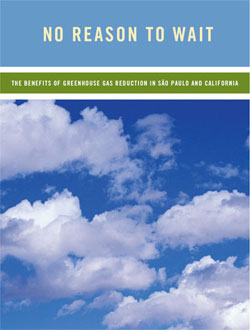 Energy efficiency helped California grow an extra $31 billion finds study Energy efficiency helped California grow an extra $31 billion finds study mongabay.com December 4, 2005 SUMMARY: Countering Bush administration claims to the contrary, environmental officials for the state of California and the Brazilian state of Sao Paulo have found significant evidence that greenhouse gas […]
Energy efficiency helped California grow an extra $31 billion finds study Energy efficiency helped California grow an extra $31 billion finds study mongabay.com December 4, 2005 SUMMARY: Countering Bush administration claims to the contrary, environmental officials for the state of California and the Brazilian state of Sao Paulo have found significant evidence that greenhouse gas […]
Feeds: news | india | latam | brasil | indonesia
 High speed rail train in China, which comes in fourth (tied with France) in the new ranking for energy efficiency. China has the world’s largest high speed rail network. Photo by: 颐园新居 /Creative Commons 3.0. Two years after the first energy efficiency ranking report put out by the American Council for an Energy-Efficient Economy (ACEEE), […]
High speed rail train in China, which comes in fourth (tied with France) in the new ranking for energy efficiency. China has the world’s largest high speed rail network. Photo by: 颐园新居 /Creative Commons 3.0. Two years after the first energy efficiency ranking report put out by the American Council for an Energy-Efficient Economy (ACEEE), […] World must aim for one degrees Celsius warming, instead of two say leading scientists. Two degrees is too much: that’s the conclusion of a landmark new paper by top economists and climatologists, including James Hansen formerly of NASA. The paper, appearing in the open-access journal PLoS ONE, argues that global society must aim for only […]
World must aim for one degrees Celsius warming, instead of two say leading scientists. Two degrees is too much: that’s the conclusion of a landmark new paper by top economists and climatologists, including James Hansen formerly of NASA. The paper, appearing in the open-access journal PLoS ONE, argues that global society must aim for only […] The 2013 Zoos and Aquariums: Committing to Conservation (ZACC) conference runs from July 8th—July 12th in Des Moines, Iowa, hosted by the Blank Park Zoo. Ahead of the event, Mongabay.com is running a series of Q&As with presenters. For more interviews, please see our ZACC feed. Students learn about sustainable farming. Photo courtesy of Elizabeth […]
The 2013 Zoos and Aquariums: Committing to Conservation (ZACC) conference runs from July 8th—July 12th in Des Moines, Iowa, hosted by the Blank Park Zoo. Ahead of the event, Mongabay.com is running a series of Q&As with presenters. For more interviews, please see our ZACC feed. Students learn about sustainable farming. Photo courtesy of Elizabeth […] The 2013 Zoos and Aquariums: Committing to Conservation (ZACC) conference runs from July 8th—July 12th in Des Moines, Iowa, hosted by the Blank Park Zoo. Ahead of the event, Mongabay.com is running a series of Q&As with presenters. For more interviews, please see our ZACC feed. Locals investigating a biomass briquette. Photo courtesy of New […]
The 2013 Zoos and Aquariums: Committing to Conservation (ZACC) conference runs from July 8th—July 12th in Des Moines, Iowa, hosted by the Blank Park Zoo. Ahead of the event, Mongabay.com is running a series of Q&As with presenters. For more interviews, please see our ZACC feed. Locals investigating a biomass briquette. Photo courtesy of New […] One kilometer off the Philippine island of Palawan lies the Rasa Island Wildlife Sanctuary; here forest grows unimpeded from a coral island surrounded by mangroves and coral reefs. Although tiny, over a hundred bird species have been recorded on the island along with a major population of large flying foxes, while in the waters below […]
One kilometer off the Philippine island of Palawan lies the Rasa Island Wildlife Sanctuary; here forest grows unimpeded from a coral island surrounded by mangroves and coral reefs. Although tiny, over a hundred bird species have been recorded on the island along with a major population of large flying foxes, while in the waters below […] Energy efficiency gains are failing to keep pace with the Internet’s rapid rate of expansion, meaning that global web use is consuming an increasing share energy, warns a new perspective published in the journal Science. Noting that the world’s data centers already consume 270 terawatt hours and Internet traffic volume is doubling every three years, […]
Energy efficiency gains are failing to keep pace with the Internet’s rapid rate of expansion, meaning that global web use is consuming an increasing share energy, warns a new perspective published in the journal Science. Noting that the world’s data centers already consume 270 terawatt hours and Internet traffic volume is doubling every three years, […] Energizing Sustainable Cities: Assessing Urban Energy, edited by Arnulf Grubler and David Fisk, is a very well written book describing challenges and opportunities to define, analyze, and implement sustainable energy development for 21st Century urban centers. Urban populations, while roughly 50% of the global population, consume over 75% of the globe’s energy. Therefore, developing frameworks […]
Energizing Sustainable Cities: Assessing Urban Energy, edited by Arnulf Grubler and David Fisk, is a very well written book describing challenges and opportunities to define, analyze, and implement sustainable energy development for 21st Century urban centers. Urban populations, while roughly 50% of the global population, consume over 75% of the globe’s energy. Therefore, developing frameworks […] Scientists and experts are increasingly concerned that we are entering an age of ecological collapse with untold impacts for future generations. In Daniel Rirdan’s new book, The Blueprint, he outlines how to avoid this fate. Author, global strategist, and speaker Daniel Rirdan set out to create a plan addressing the future of our planet. His […]
Scientists and experts are increasingly concerned that we are entering an age of ecological collapse with untold impacts for future generations. In Daniel Rirdan’s new book, The Blueprint, he outlines how to avoid this fate. Author, global strategist, and speaker Daniel Rirdan set out to create a plan addressing the future of our planet. His […] Bangui Windfarm in the Philippines. Photo by: John Ryan Cordova. As the 18th meeting of the UN Framework Convention on Climate Change (UNFCCC) kicks off this morning in oil and gas rich Qatar, the world body warns that much more ambitious greenhouse gas cuts are needed to keep catastrophic climate change at bay. A new […]
Bangui Windfarm in the Philippines. Photo by: John Ryan Cordova. As the 18th meeting of the UN Framework Convention on Climate Change (UNFCCC) kicks off this morning in oil and gas rich Qatar, the world body warns that much more ambitious greenhouse gas cuts are needed to keep catastrophic climate change at bay. A new […] The ongoing decline in Arctic sea ice hit a new record this year that rocked even the most pessimistic predictions. The low sea ice extent hit 18 percent below the previous record set in just 2007, and was only around half the size it was in 1980. Here, NASA satellites catches a glimpse of the […]
The ongoing decline in Arctic sea ice hit a new record this year that rocked even the most pessimistic predictions. The low sea ice extent hit 18 percent below the previous record set in just 2007, and was only around half the size it was in 1980. Here, NASA satellites catches a glimpse of the […] US oil consumption and fuel economy. Data from the EIA. The Obama administration finalized rules that will boost the national fuel economy standard for cars and light trucks to 54.5 miles per gallon for the 2025 model year. President Obama said the new rules would reduce oil imports by half. “These fuel standards represent the […]
US oil consumption and fuel economy. Data from the EIA. The Obama administration finalized rules that will boost the national fuel economy standard for cars and light trucks to 54.5 miles per gallon for the 2025 model year. President Obama said the new rules would reduce oil imports by half. “These fuel standards represent the […] Popular for a time, General Motor’s Hummer brand was criticized for its lack of efficiency. The brand has now been dropped. Last month, the American Council for an Energy Efficient Economy released its first ever international energy efficiency scorecard, which gave the United Kingdom the top score. Using data points honed over years of rating […]
Popular for a time, General Motor’s Hummer brand was criticized for its lack of efficiency. The brand has now been dropped. Last month, the American Council for an Energy Efficient Economy released its first ever international energy efficiency scorecard, which gave the United Kingdom the top score. Using data points honed over years of rating […] NASA GISS Surface Temperature Analysis for June 2012 compared with a 1951-1980 baseline. Former Secretary of State George Shultz is calling for a carbon tax to reduce U.S. greenhouse gas emissions and oil consumption, according to an interview released today by Stanford University. Shultz, who served as secretary of state under President Ronald Reagan as […]
NASA GISS Surface Temperature Analysis for June 2012 compared with a 1951-1980 baseline. Former Secretary of State George Shultz is calling for a carbon tax to reduce U.S. greenhouse gas emissions and oil consumption, according to an interview released today by Stanford University. Shultz, who served as secretary of state under President Ronald Reagan as […] Aerial view of the infamous Río Huaypetue gold mine in the Peruvian Amazon. This remote but massive gold mine is known for the destruction of primary rainforest, widespread mercury pollution, and child and slave labor. Photo by: Rhett A. Butler. Scientists warn that the Earth may be reaching a planetary tipping point due to a […]
Aerial view of the infamous Río Huaypetue gold mine in the Peruvian Amazon. This remote but massive gold mine is known for the destruction of primary rainforest, widespread mercury pollution, and child and slave labor. Photo by: Rhett A. Butler. Scientists warn that the Earth may be reaching a planetary tipping point due to a […] Observations of planet Earth from the Moderate Resolution Imaging Spectroradiometer (MODIS) on July 11, 2005. Photo by: NASA. Seventeen top scientists and four acclaimed conservation organizations have called for radical action to create a better world for this and future generations. Compiled by 21 past winners of the prestigious Blue Planet Prize, a new paper […]
Observations of planet Earth from the Moderate Resolution Imaging Spectroradiometer (MODIS) on July 11, 2005. Photo by: NASA. Seventeen top scientists and four acclaimed conservation organizations have called for radical action to create a better world for this and future generations. Compiled by 21 past winners of the prestigious Blue Planet Prize, a new paper […] Last week the 3rd Nobel Laureates Symposium on Global Sustainability concluded with participants—including 17 past Nobel Prize winners and 40 other experts—crafting and signing the Stockholm Memorandum. The document calls for emergency actions to tackle human pressures on the Earth’s environment while ensuring a more equitable and just world. “Science makes clear that we are […]
Last week the 3rd Nobel Laureates Symposium on Global Sustainability concluded with participants—including 17 past Nobel Prize winners and 40 other experts—crafting and signing the Stockholm Memorandum. The document calls for emergency actions to tackle human pressures on the Earth’s environment while ensuring a more equitable and just world. “Science makes clear that we are […] Investing around $1.3 trillion, which represents about 2% of the world’s gross domestic product (GDP), into ten sectors could move the world economy from fossil-fuel dependent toward a low carbon economy, according to report by the UN Environment Program (UNEP). In addition, the investments would alleviate global poverty and keep stagnating economies humming, while cutting […]
Investing around $1.3 trillion, which represents about 2% of the world’s gross domestic product (GDP), into ten sectors could move the world economy from fossil-fuel dependent toward a low carbon economy, according to report by the UN Environment Program (UNEP). In addition, the investments would alleviate global poverty and keep stagnating economies humming, while cutting […] As autumn settles across North America, one hallmark of the season is the gentle southward flight of the Monarch Butterflies as they migrate towards the forests that shelter their species during the winter months. Unfortunately, as with other forests across the planet, the Monarch’s “over- wintering grounds” in Mexico are suffering from increased human pressures. […]
As autumn settles across North America, one hallmark of the season is the gentle southward flight of the Monarch Butterflies as they migrate towards the forests that shelter their species during the winter months. Unfortunately, as with other forests across the planet, the Monarch’s “over- wintering grounds” in Mexico are suffering from increased human pressures. […] As world leaders continue to fumble a coherent, rapid, and comprehensive response to climate change, citizens from around the world yesterday sent a message to inert politicians by participating in over 7,300 events against climate change, according to 350.org, the head organizer of the day dubbed the ‘Global Work Party’. “The fossil fuel industry may […]
As world leaders continue to fumble a coherent, rapid, and comprehensive response to climate change, citizens from around the world yesterday sent a message to inert politicians by participating in over 7,300 events against climate change, according to 350.org, the head organizer of the day dubbed the ‘Global Work Party’. “The fossil fuel industry may […] The cost of environmental damage to the global economy hit 6.6 trillion US dollars—11 percent of the global GDP—in 2008, according to a new study by the Principles for Responsible (PRI) and UNEP Finance Initiative. If business continues as usual, the study predicts that environmental damage will cost 28 trillion dollars by 2050. The new […]
The cost of environmental damage to the global economy hit 6.6 trillion US dollars—11 percent of the global GDP—in 2008, according to a new study by the Principles for Responsible (PRI) and UNEP Finance Initiative. If business continues as usual, the study predicts that environmental damage will cost 28 trillion dollars by 2050. The new […] Venezuelan President Hugo Chávez has been in power for more than ten years, during which time he has deflected numerous electoral challenges, a recall effort, a coup d’etat and even an oil lock out. A politically adroit statesman, he has demonstrated enormous staying power throughout all these political crises. Yet, Chávez’s luck may have finally […]
Venezuelan President Hugo Chávez has been in power for more than ten years, during which time he has deflected numerous electoral challenges, a recall effort, a coup d’etat and even an oil lock out. A politically adroit statesman, he has demonstrated enormous staying power throughout all these political crises. Yet, Chávez’s luck may have finally […] Plans for a coal power plant in the Malaysian state of Sabah in northern Borneo have run into stiff opposition. Environmentalists say the coal plant could damage extensive coral reef systems, pollute water supplies, open rainforests to mining, and contribute to global climate change, undercutting Sabah’s image as a ‘green’ destination. The federal government contends […]
Plans for a coal power plant in the Malaysian state of Sabah in northern Borneo have run into stiff opposition. Environmentalists say the coal plant could damage extensive coral reef systems, pollute water supplies, open rainforests to mining, and contribute to global climate change, undercutting Sabah’s image as a ‘green’ destination. The federal government contends […] Birds may see pleasanter skies in the US soon, if Congressman Mike Quigley has his way. Quigley, a democrat from Illinois, has introduced legislation that would require all federal buildings to become bird-friendly, potentially saving the lives of millions of birds every year. “Building collisions are arguably the single greatest man-made killer of birds. From […]
Birds may see pleasanter skies in the US soon, if Congressman Mike Quigley has his way. Quigley, a democrat from Illinois, has introduced legislation that would require all federal buildings to become bird-friendly, potentially saving the lives of millions of birds every year. “Building collisions are arguably the single greatest man-made killer of birds. From […] Green technology patents will see a year shaved off the average forty month wait time to approve new patents in the US. The US Patent and Trademark Office (USPTO) is implementing a one-year pilot program to push green technology patent applications through the process more quickly, so that the technologies can reach the market faster. […]
Green technology patents will see a year shaved off the average forty month wait time to approve new patents in the US. The US Patent and Trademark Office (USPTO) is implementing a one-year pilot program to push green technology patent applications through the process more quickly, so that the technologies can reach the market faster. […] The Sustainable Sites Initiative has developed the United States’ first rating system for the design, construction, and on-going maintenance of a wide-variety of landscapes, both with and without buildings, including shopping malls, subdivisions, university campuses, corporate buildings, transportation centers, parks and other recreation areas, and single-family homes. “While carbon-neutral performance remains the holy grail for […]
The Sustainable Sites Initiative has developed the United States’ first rating system for the design, construction, and on-going maintenance of a wide-variety of landscapes, both with and without buildings, including shopping malls, subdivisions, university campuses, corporate buildings, transportation centers, parks and other recreation areas, and single-family homes. “While carbon-neutral performance remains the holy grail for […] Yesterday the Obama Administration established a Biofuels Interagency Working Group to oversee implementation of new rules and research regarding biofuels. On the group’s first day they would do well to look at a new study in Science Magazine comparing the efficacy of ethanol versus bioelectricity. Researchers compared ethanol and bioelectricity in terms of miles per […]
Yesterday the Obama Administration established a Biofuels Interagency Working Group to oversee implementation of new rules and research regarding biofuels. On the group’s first day they would do well to look at a new study in Science Magazine comparing the efficacy of ethanol versus bioelectricity. Researchers compared ethanol and bioelectricity in terms of miles per […]

 US government: $28 carbon price would raise gas prices by 25 cents US government: $28 carbon price would raise gas prices by 25 cents mongabay.com October 9, 2008 Congressional Budget Office study finds $200/ton carbon tax would only raise gas prices $2 per gallon
US government: $28 carbon price would raise gas prices by 25 cents US government: $28 carbon price would raise gas prices by 25 cents mongabay.com October 9, 2008 Congressional Budget Office study finds $200/ton carbon tax would only raise gas prices $2 per gallon Gore launches second campaign… for Earth Gore launches second campaign mongabay.com July 17, 2008 In a speech Thursday, Al Gore challenged the U.S. to generate 100 percent of its electricity from zero carbon emission sources within 10 years. Speaking at Washington’s Constitution Hall, Gore said America’s security, environmental and economic crises are all related, and […]
Gore launches second campaign… for Earth Gore launches second campaign mongabay.com July 17, 2008 In a speech Thursday, Al Gore challenged the U.S. to generate 100 percent of its electricity from zero carbon emission sources within 10 years. Speaking at Washington’s Constitution Hall, Gore said America’s security, environmental and economic crises are all related, and […] Clean energy investments rose 60% to $148 billion in 2007 Clean energy gold rush in 2007 mongabay.com July 1, 2008 New investment in renewables and energy efficiency surpassed $148 billion in 2007, rising 60 percent rise from 2006, according to an analysis issued Tuesday July 1 by the UN Environment Programme (UNEP). High oil prices […]
Clean energy investments rose 60% to $148 billion in 2007 Clean energy gold rush in 2007 mongabay.com July 1, 2008 New investment in renewables and energy efficiency surpassed $148 billion in 2007, rising 60 percent rise from 2006, according to an analysis issued Tuesday July 1 by the UN Environment Programme (UNEP). High oil prices […] $45 trillion needed to meet energy demand, fight global warming by 2050 $45 trillion needed to meet energy demand, fight global warming by 2050 mongabay.com June 8, 2008 Investors will need to spend $45 trillion by 2050 to keep pace with growing energy demand while addressing concerns over global warming, warned the International Energy Agency […]
$45 trillion needed to meet energy demand, fight global warming by 2050 $45 trillion needed to meet energy demand, fight global warming by 2050 mongabay.com June 8, 2008 Investors will need to spend $45 trillion by 2050 to keep pace with growing energy demand while addressing concerns over global warming, warned the International Energy Agency […] Future cities will be more like ecosystems that enrich society and the environment Future cities will be more like ecosystems that enrich society and the environment Tina Butler, mongabay.com May 30, 2008 As The World Science Festival continues in New York this week, specialists in vastly diverse fields across scientific disciplines are coming together to […]
Future cities will be more like ecosystems that enrich society and the environment Future cities will be more like ecosystems that enrich society and the environment Tina Butler, mongabay.com May 30, 2008 As The World Science Festival continues in New York this week, specialists in vastly diverse fields across scientific disciplines are coming together to […] New review system helps companies adapt to ecosystem degradation New review system helps companies adapt to ecosystem degradation Jeremy Hance, mongabay.com March 11, 2008 A new accountability initiative will help companies factor ecosystem degradation into their business decisions. Developed by the World Resources Institute (WRI), the Meridian Institute, and the World Business Council for Sustainable […]
New review system helps companies adapt to ecosystem degradation New review system helps companies adapt to ecosystem degradation Jeremy Hance, mongabay.com March 11, 2008 A new accountability initiative will help companies factor ecosystem degradation into their business decisions. Developed by the World Resources Institute (WRI), the Meridian Institute, and the World Business Council for Sustainable […] Carbon tax would make China greener and reduce warming risks Carbon tax would make China greener and reduce warming risks Rhett Butler, mongabay.com February 7, 2008 Driven by booming economic growth and rapid urbanization, China’s carbon dioxide emissions are surging. At the same time, forecasts suggest climate change will have an immense impact on the […]
Carbon tax would make China greener and reduce warming risks Carbon tax would make China greener and reduce warming risks Rhett Butler, mongabay.com February 7, 2008 Driven by booming economic growth and rapid urbanization, China’s carbon dioxide emissions are surging. At the same time, forecasts suggest climate change will have an immense impact on the […] New program pays Canadians for energy efficiency gains New program pays Canadians for energy efficiency gains By Dan of dailyhomerenotips.com, special to mongabay.com January 20, 2008 Canada’s ecoENERGY Grant Program Focuses on Energy Conservation; Indirect Benefit is Education As I write this article, CBS News is having a Sunday evening prime-time, hour long special on […]
New program pays Canadians for energy efficiency gains New program pays Canadians for energy efficiency gains By Dan of dailyhomerenotips.com, special to mongabay.com January 20, 2008 Canada’s ecoENERGY Grant Program Focuses on Energy Conservation; Indirect Benefit is Education As I write this article, CBS News is having a Sunday evening prime-time, hour long special on […] Google aims to make renewable energy sources cheaper than coal Google aims to make renewable energy cheaper than coal mongabay.com November 28, 2007 Tuesday Google announced an initiative to develop electricity from renewable energy sources that will be cheaper than electricity produced from coal. The initiative, dubbed RE<C, will initially focus on solar, wind, and […]
Google aims to make renewable energy sources cheaper than coal Google aims to make renewable energy cheaper than coal mongabay.com November 28, 2007 Tuesday Google announced an initiative to develop electricity from renewable energy sources that will be cheaper than electricity produced from coal. The initiative, dubbed RE<C, will initially focus on solar, wind, and […] Governors announce energy efficiency push for computing Governors announce energy efficiency push for computing mongabay.com November 7, 2007 The National Governors Association (NGA) today announced a clean energy partnership between the NGA Chair’s Initiative Securing a Clean Energy Future (SCEF) and the Climate Savers Computing Initiative (CSCI), founded by Google and Intel, to foster deployment […]
Governors announce energy efficiency push for computing Governors announce energy efficiency push for computing mongabay.com November 7, 2007 The National Governors Association (NGA) today announced a clean energy partnership between the NGA Chair’s Initiative Securing a Clean Energy Future (SCEF) and the Climate Savers Computing Initiative (CSCI), founded by Google and Intel, to foster deployment […] New Nebraska ethanol plants threaten Kansas water supplies New Nebraska ethanol plants threaten Kansas water supplies mongabay.com September 5, 2007 Ethanol production is threatening water supplies in the American Midwest reports the Wall Street Journal. The paper presents the water conflict between corn growers in Nebraska and Kansas owners of underground water wells on the […]
New Nebraska ethanol plants threaten Kansas water supplies New Nebraska ethanol plants threaten Kansas water supplies mongabay.com September 5, 2007 Ethanol production is threatening water supplies in the American Midwest reports the Wall Street Journal. The paper presents the water conflict between corn growers in Nebraska and Kansas owners of underground water wells on the […] Wall Street looks at energy efficiency to boost profits Wall Street looks at energy efficiency to boost profits mongabay.com August 27, 2007 Today the Wall Street Journal featured a special section on energy efficiency. The paper reports that business is increasingly looking at reducing energy use as a way to improve the bottom line. “Now, […]
Wall Street looks at energy efficiency to boost profits Wall Street looks at energy efficiency to boost profits mongabay.com August 27, 2007 Today the Wall Street Journal featured a special section on energy efficiency. The paper reports that business is increasingly looking at reducing energy use as a way to improve the bottom line. “Now, […] Florida to cut greenhouse gas emissions 80% by 2050 Florida to cut greenhouse gas emissions 80% by 2050 mongabay.com July 15, 2007 Florida plans to cut greenhouse gas emissions 80 percent from 1990 levels by 2050 according to Charlie Crist, Florida’s Republican state governor. Due to its low elevation and hurricane risk, global warming may […]
Florida to cut greenhouse gas emissions 80% by 2050 Florida to cut greenhouse gas emissions 80% by 2050 mongabay.com July 15, 2007 Florida plans to cut greenhouse gas emissions 80 percent from 1990 levels by 2050 according to Charlie Crist, Florida’s Republican state governor. Due to its low elevation and hurricane risk, global warming may […] Survey: Amazon.com, eBay rank worst of internet firms for global warming mitigation efforts Amazon.com, eBay rank below Microsoft, Yahoo for global warming efforts mongabay.com June 20, 2007 Amazon.com and eBay rank at the bottom of the list of internet companies when it comes to reducing their impact on climate, reports a new analysis from Climate […]
Survey: Amazon.com, eBay rank worst of internet firms for global warming mitigation efforts Amazon.com, eBay rank below Microsoft, Yahoo for global warming efforts mongabay.com June 20, 2007 Amazon.com and eBay rank at the bottom of the list of internet companies when it comes to reducing their impact on climate, reports a new analysis from Climate […] Google to be carbon neutral by year end Google to be carbon neutral by year end mongabay.com June 20, 2007 Google Inc. aims to be carbon neutral by the end of 2007, according to a statement posted on the Official Google Blog. The search giant plans to fight global warming by investing in and using […]
Google to be carbon neutral by year end Google to be carbon neutral by year end mongabay.com June 20, 2007 Google Inc. aims to be carbon neutral by the end of 2007, according to a statement posted on the Official Google Blog. The search giant plans to fight global warming by investing in and using […] $100 billion invested in renewable energy in 2006 $100 billion invested in renewable energy in 2006 mongabay.com June 20, 2007 $100 billion poured into renewable energy and energy efficiency in 2006, a 25 percent jump from 2005, reports a new analysis by the UN Environment Programme (UNEP). UNEP anticipates the trend will slow to $85 […]
$100 billion invested in renewable energy in 2006 $100 billion invested in renewable energy in 2006 mongabay.com June 20, 2007 $100 billion poured into renewable energy and energy efficiency in 2006, a 25 percent jump from 2005, reports a new analysis by the UN Environment Programme (UNEP). UNEP anticipates the trend will slow to $85 […] Google will put $10M towards plug-in hybrid cars Google will put $10M towards plug-in hybrid cars Rhett A. Butler, mongabay.com June 19, 2007 Google.org, Google Inc.’s philanthropic arm, unveiled an initiative to convert hybrid cars to plug-in hybrid vehicles (PHEVs), a move that will cut carbon dioxide emissions, reduce oil use, and help stabilize the […]
Google will put $10M towards plug-in hybrid cars Google will put $10M towards plug-in hybrid cars Rhett A. Butler, mongabay.com June 19, 2007 Google.org, Google Inc.’s philanthropic arm, unveiled an initiative to convert hybrid cars to plug-in hybrid vehicles (PHEVs), a move that will cut carbon dioxide emissions, reduce oil use, and help stabilize the […] Google, Intel seek greener computers Google, Intel seek greener computers Rhett A. Butler, mongabay.com June 13, 2007 Google, Intel, and other tech giants announced an energy efficiency drive develop “greener” computers that use 50 percent less power by 2010. The plan, dubbed the Climate Savers Computing Initiative, seeks to reduce emissions of greenhouse gases that […]
Google, Intel seek greener computers Google, Intel seek greener computers Rhett A. Butler, mongabay.com June 13, 2007 Google, Intel, and other tech giants announced an energy efficiency drive develop “greener” computers that use 50 percent less power by 2010. The plan, dubbed the Climate Savers Computing Initiative, seeks to reduce emissions of greenhouse gases that […] Google, Microsoft launch energy efficiency initiative Google, Microsoft launch energy efficiency initiative Rhett A. Butler, mongabay.com June 12, 2007 Google, Microsoft, and other tech giants announced an energy efficiency drive to reduce computer power consumption by 50 percent by 2010. The scheme, dubbed the Climate Savers Computing Initiative, seeks to reduce the emission of greenhouse […]
Google, Microsoft launch energy efficiency initiative Google, Microsoft launch energy efficiency initiative Rhett A. Butler, mongabay.com June 12, 2007 Google, Microsoft, and other tech giants announced an energy efficiency drive to reduce computer power consumption by 50 percent by 2010. The scheme, dubbed the Climate Savers Computing Initiative, seeks to reduce the emission of greenhouse […] Nobel prize winner debates future of nuclear power Nobel prize winner debates future of nuclear power Rhett A. Butler, mongabay.com June 7, 2007 Two renowned energy experts sparred in a debate over nuclear energy Wednesday afternoon at Stanford University. Amory Lovins, Chairman and Chief Scientist of the Rocky Mountain Institute, an energy think tank, argued […]
Nobel prize winner debates future of nuclear power Nobel prize winner debates future of nuclear power Rhett A. Butler, mongabay.com June 7, 2007 Two renowned energy experts sparred in a debate over nuclear energy Wednesday afternoon at Stanford University. Amory Lovins, Chairman and Chief Scientist of the Rocky Mountain Institute, an energy think tank, argued […] Intel pushes its environmental initiatives Intel pushes its environmental initiatives mongabay.com May 23, 2007 Intel Corp. said it is removing lead from its next generation of computer chips. Instead the company will use an alloy made up of tin, silver, and copper. Intel said the decision stems from concerns over the public health and environmental […]
Intel pushes its environmental initiatives Intel pushes its environmental initiatives mongabay.com May 23, 2007 Intel Corp. said it is removing lead from its next generation of computer chips. Instead the company will use an alloy made up of tin, silver, and copper. Intel said the decision stems from concerns over the public health and environmental […] IBM launches “green” chip IBM launches “green” chip mongabay.com May 22, 2007 IBM is touting the “green” credentials of its newest and most powerful microprocessor, the “Power6.” The tech firm says that the chip has a record speed of 4.7, offering double the speed of previous generation ‘Power5’ processors, but uses roughly the same power […]
IBM launches “green” chip IBM launches “green” chip mongabay.com May 22, 2007 IBM is touting the “green” credentials of its newest and most powerful microprocessor, the “Power6.” The tech firm says that the chip has a record speed of 4.7, offering double the speed of previous generation ‘Power5’ processors, but uses roughly the same power […] CO2 emissions growth surges as global energy efficiency falls CO2 emissions growth surges as global energy efficiency falls No region decarbonizes its energy supply mongabay.com May 20, 2007 Worldwide growth in carbon dioxide emissions has doubled since the close of the 1990s, reports a study published in the early on-line edition of the Proceedings of […]
CO2 emissions growth surges as global energy efficiency falls CO2 emissions growth surges as global energy efficiency falls No region decarbonizes its energy supply mongabay.com May 20, 2007 Worldwide growth in carbon dioxide emissions has doubled since the close of the 1990s, reports a study published in the early on-line edition of the Proceedings of […] Improving energy efficiency will require overcoming market distortions Improving energy efficiency will require overcoming market distortions mongabay.com May 20, 2007 In a new study, McKinsey&Company, one the world’s most respected management consulting firms, reports that the world should be able to cut energy demand growth by half over the next 15 years without compromising economic […]
Improving energy efficiency will require overcoming market distortions Improving energy efficiency will require overcoming market distortions mongabay.com May 20, 2007 In a new study, McKinsey&Company, one the world’s most respected management consulting firms, reports that the world should be able to cut energy demand growth by half over the next 15 years without compromising economic […] 16 cities to get energy-saving retrofits 16 cities to get energy-saving retrofits mongabay.com May 17, 2007 Sixteen cities will get financing to make buildings “greener” through environmental renovations, former President Clinton announced Wednesday at the C40 Large Cities Climate Summit in New York, where mayors and local government officials are meeting to discuss strategies to […]
16 cities to get energy-saving retrofits 16 cities to get energy-saving retrofits mongabay.com May 17, 2007 Sixteen cities will get financing to make buildings “greener” through environmental renovations, former President Clinton announced Wednesday at the C40 Large Cities Climate Summit in New York, where mayors and local government officials are meeting to discuss strategies to […] Senate panel sets 35 mpg car standard by 2020 Reps Lott and Stevens oppose fuel efficiency bill Senate panel sets 35 mpg car standard by 2020 mongabay.com May 8, 2007 Tuesday the U.S. Senate Commerce Committee approved a bill that would raise the passenger fleet automobile fuel standard to an average 35 miles per gallon […]
Senate panel sets 35 mpg car standard by 2020 Reps Lott and Stevens oppose fuel efficiency bill Senate panel sets 35 mpg car standard by 2020 mongabay.com May 8, 2007 Tuesday the U.S. Senate Commerce Committee approved a bill that would raise the passenger fleet automobile fuel standard to an average 35 miles per gallon […] Cost of stabilizing climate much less than claimed Cost of stabilizing climate 0.1% per year mongabay.com May 4, 2007 The Intergovernmental Panel on Climate Change (IPCC) released its long awaiting installment on climate change mitigation, arguing that the costs of offsetting global warming will be much lower than some claim. The IPCC estimates that emissions […]
Cost of stabilizing climate much less than claimed Cost of stabilizing climate 0.1% per year mongabay.com May 4, 2007 The Intergovernmental Panel on Climate Change (IPCC) released its long awaiting installment on climate change mitigation, arguing that the costs of offsetting global warming will be much lower than some claim. The IPCC estimates that emissions […] To fight warming, Canada will ban incandescent light bulbs by 2012 To fight warming, Canada will ban incandescent light bulbs by 2012 Rhett A. Butler, mongabay.com April 25, 2007 In an effort to fight greenhouse gas emissions, Canada plans to ban use of incandescent light bulbs by 2012, said Natural Resources Minister Gary Lunn. Canada […]
To fight warming, Canada will ban incandescent light bulbs by 2012 To fight warming, Canada will ban incandescent light bulbs by 2012 Rhett A. Butler, mongabay.com April 25, 2007 In an effort to fight greenhouse gas emissions, Canada plans to ban use of incandescent light bulbs by 2012, said Natural Resources Minister Gary Lunn. Canada […] Incandescent light bulb ban would cut India’s GHG emissions 4% Incandescent light bulb ban would cut India’s GHG emissions 4% mongabay.com April 17, 2007 The debate over the impact of global warming on hurricane intensity rages on with a new study published April 18 in Geophysical Research Letters. The research, conducted by Gabriel A. Vecchi […]
Incandescent light bulb ban would cut India’s GHG emissions 4% Incandescent light bulb ban would cut India’s GHG emissions 4% mongabay.com April 17, 2007 The debate over the impact of global warming on hurricane intensity rages on with a new study published April 18 in Geophysical Research Letters. The research, conducted by Gabriel A. Vecchi […] Palo Alto aims to cut CO2 emissions 80% by 2050 Palo Alto aims to cut CO2 emissions 80% by 2050 Rhett A Butler, mongabay.com April 15, 2007 The city of Palo Alto, California aims to cut greenhouse gas emissions significantly in coming years, joining a growing number of U.S. cities that have pledged to cut […]
Palo Alto aims to cut CO2 emissions 80% by 2050 Palo Alto aims to cut CO2 emissions 80% by 2050 Rhett A Butler, mongabay.com April 15, 2007 The city of Palo Alto, California aims to cut greenhouse gas emissions significantly in coming years, joining a growing number of U.S. cities that have pledged to cut […] U.S. can cut oil imports to zero by 2040, use to zero by 2050 U.S. can cut oil imports to zero by 2040, oil use to zero by 2050 mongabay.com March 29, 2007 The United States could dramatically cut oil usage over the next 20-30 years at low to no net cost, said Amory B. […]
U.S. can cut oil imports to zero by 2040, use to zero by 2050 U.S. can cut oil imports to zero by 2040, oil use to zero by 2050 mongabay.com March 29, 2007 The United States could dramatically cut oil usage over the next 20-30 years at low to no net cost, said Amory B. […] Data centers use at least $7.2 billion in electricity globally Data centers use at least $7.2 billion in electricity globally mongabay.com February 15, 2007 U.S. data centers consume 45 billion kilowatts of energy per year, according to a new study, commissioned by computer chip maker AMD. Jonathan Koomey, a staff scientist at Lawrence Berkeley National […]
Data centers use at least $7.2 billion in electricity globally Data centers use at least $7.2 billion in electricity globally mongabay.com February 15, 2007 U.S. data centers consume 45 billion kilowatts of energy per year, according to a new study, commissioned by computer chip maker AMD. Jonathan Koomey, a staff scientist at Lawrence Berkeley National […] Efficiency improvements could cut global energy demand growth significantly Efficiency improvements could cut global energy demand growth significantly mongabay.com November 29, 2006 Growth in global energy consumption could be reduced by more than two-thirds over the next 15 years through energy efficiency efforts according to a study released Wednesday by the McKinsey Global Institute. McKinsey […]
Efficiency improvements could cut global energy demand growth significantly Efficiency improvements could cut global energy demand growth significantly mongabay.com November 29, 2006 Growth in global energy consumption could be reduced by more than two-thirds over the next 15 years through energy efficiency efforts according to a study released Wednesday by the McKinsey Global Institute. McKinsey […] United States economy becomes more carbon efficient — Delaware leads the way, while Nevada has largest increase in emissions United States economy becomes more carbon efficient — Delaware leads the way, while Nevada has largest increase in emissions mongabay.com June 21, 2006 The state of Nevada had the largest increase in carbon emissions between 1990 […]
United States economy becomes more carbon efficient — Delaware leads the way, while Nevada has largest increase in emissions United States economy becomes more carbon efficient — Delaware leads the way, while Nevada has largest increase in emissions mongabay.com June 21, 2006 The state of Nevada had the largest increase in carbon emissions between 1990 […] US has low-cost alternatives to oil; peak oil frenzy and human-induced climate change avoidable says Columbia University report US has low-cost alternatives to oil; peak oil frenzy and human-induced climate change avoidable says Columbia University report mongabay.com May 14, 2006 Surging oil prices have fueled calls for the United States to develop new sources of […]
US has low-cost alternatives to oil; peak oil frenzy and human-induced climate change avoidable says Columbia University report US has low-cost alternatives to oil; peak oil frenzy and human-induced climate change avoidable says Columbia University report mongabay.com May 14, 2006 Surging oil prices have fueled calls for the United States to develop new sources of […] Copying nature could save us energy, study shows Copying nature could save us energy, study shows University of Bath May 9, 2006 New technologies that mimic the way insects, plants and animals overcome engineering problems could help reduce our dependence on energy, according to new research published in the Royal Society journal Interface. When faced […]
Copying nature could save us energy, study shows Copying nature could save us energy, study shows University of Bath May 9, 2006 New technologies that mimic the way insects, plants and animals overcome engineering problems could help reduce our dependence on energy, according to new research published in the Royal Society journal Interface. When faced […] Tropical timber has earned a bad reputation. When we think of timber from lush, tropical forests, it conjures up images of valuable old-growth trees pillaged by logging companies and illegal timber mafias, ignoring the plight of wildlife and local communities. But tropical timber does not have to be bad, some experts say. Tropical wood forms […]
Tropical timber has earned a bad reputation. When we think of timber from lush, tropical forests, it conjures up images of valuable old-growth trees pillaged by logging companies and illegal timber mafias, ignoring the plight of wildlife and local communities. But tropical timber does not have to be bad, some experts say. Tropical wood forms […] Energy efficiency helped California grow an extra $31 billion finds study Energy efficiency helped California grow an extra $31 billion finds study mongabay.com December 4, 2005 SUMMARY: Countering Bush administration claims to the contrary, environmental officials for the state of California and the Brazilian state of Sao Paulo have found significant evidence that greenhouse gas […]
Energy efficiency helped California grow an extra $31 billion finds study Energy efficiency helped California grow an extra $31 billion finds study mongabay.com December 4, 2005 SUMMARY: Countering Bush administration claims to the contrary, environmental officials for the state of California and the Brazilian state of Sao Paulo have found significant evidence that greenhouse gas […]